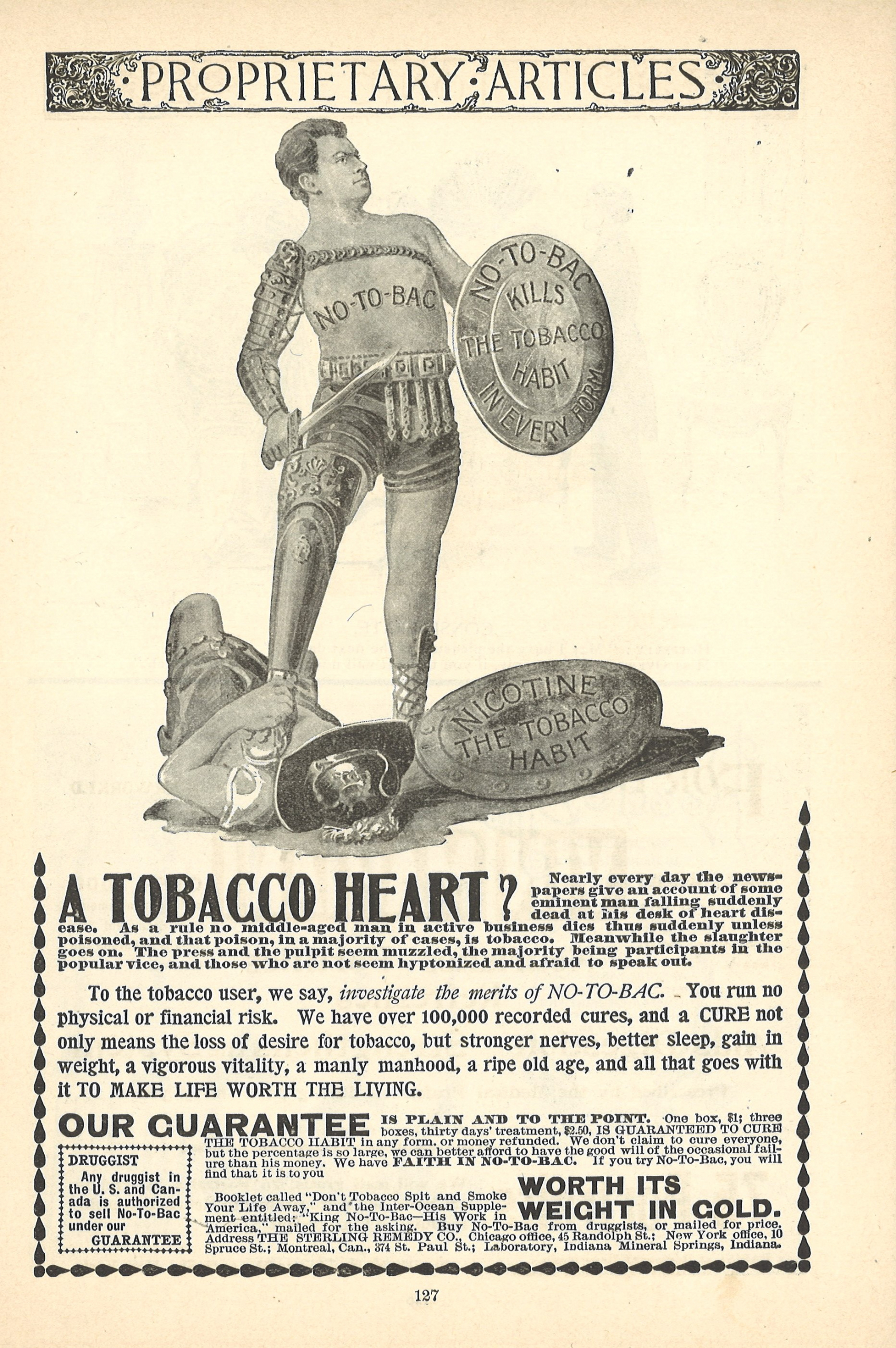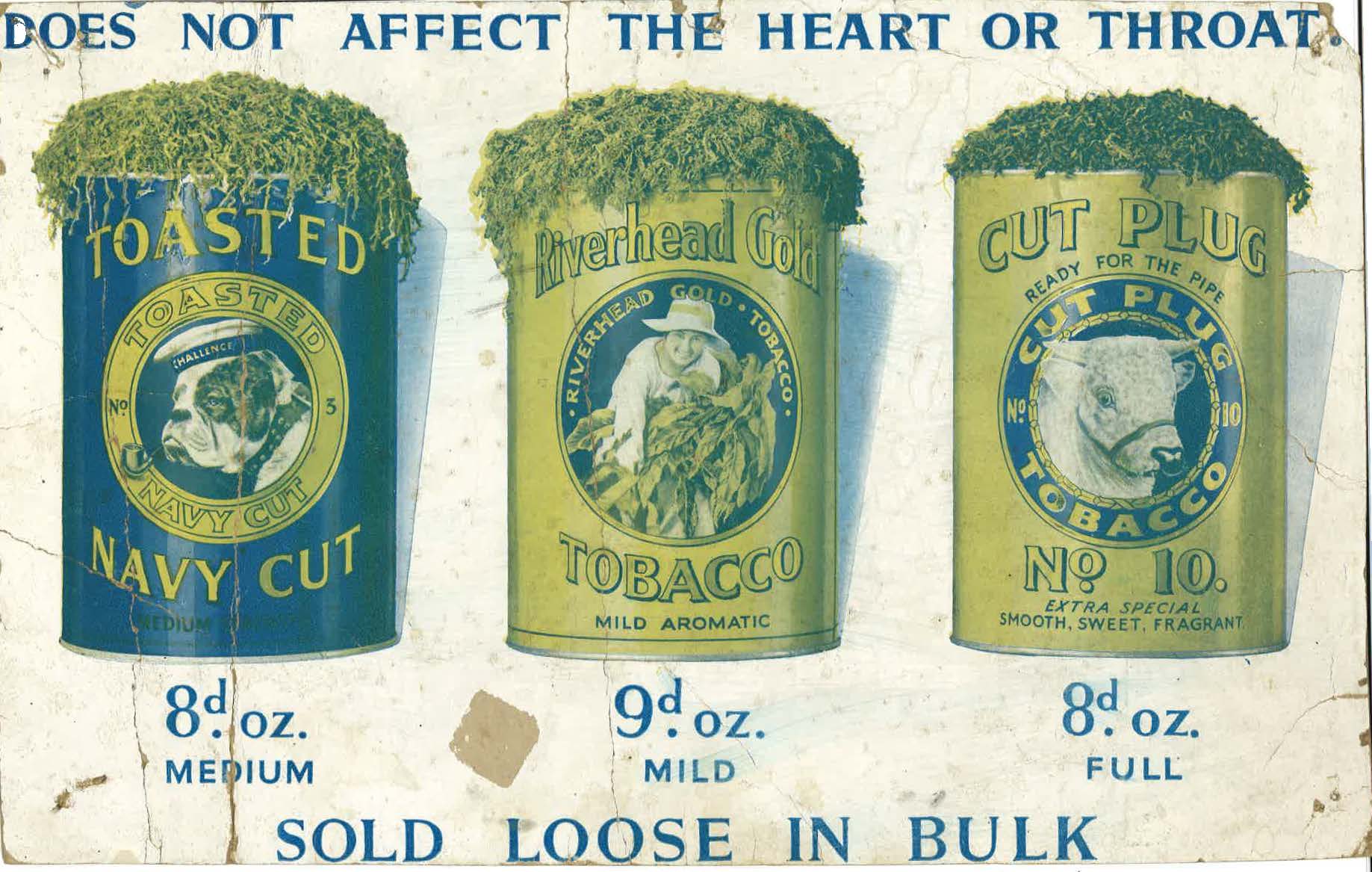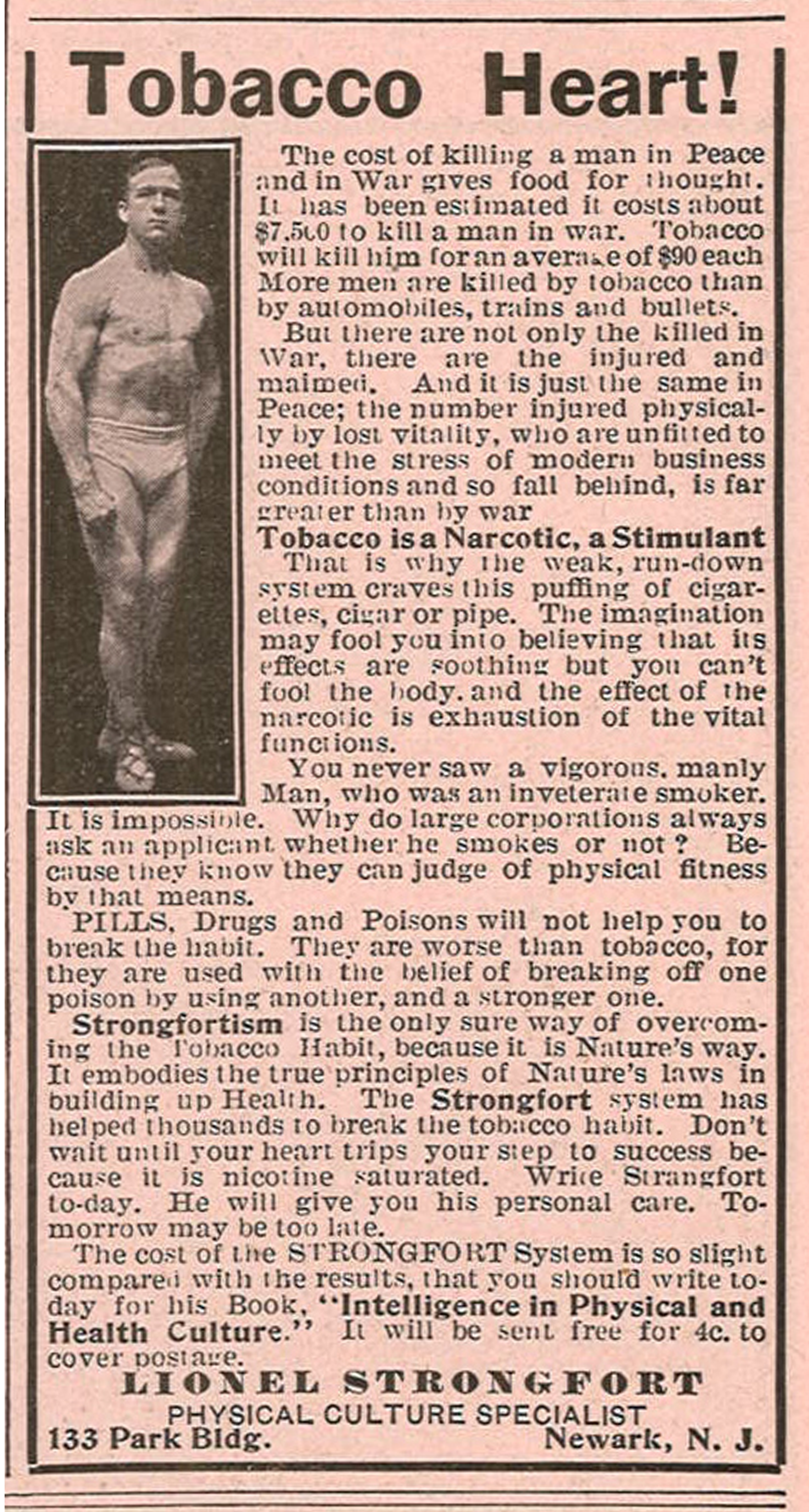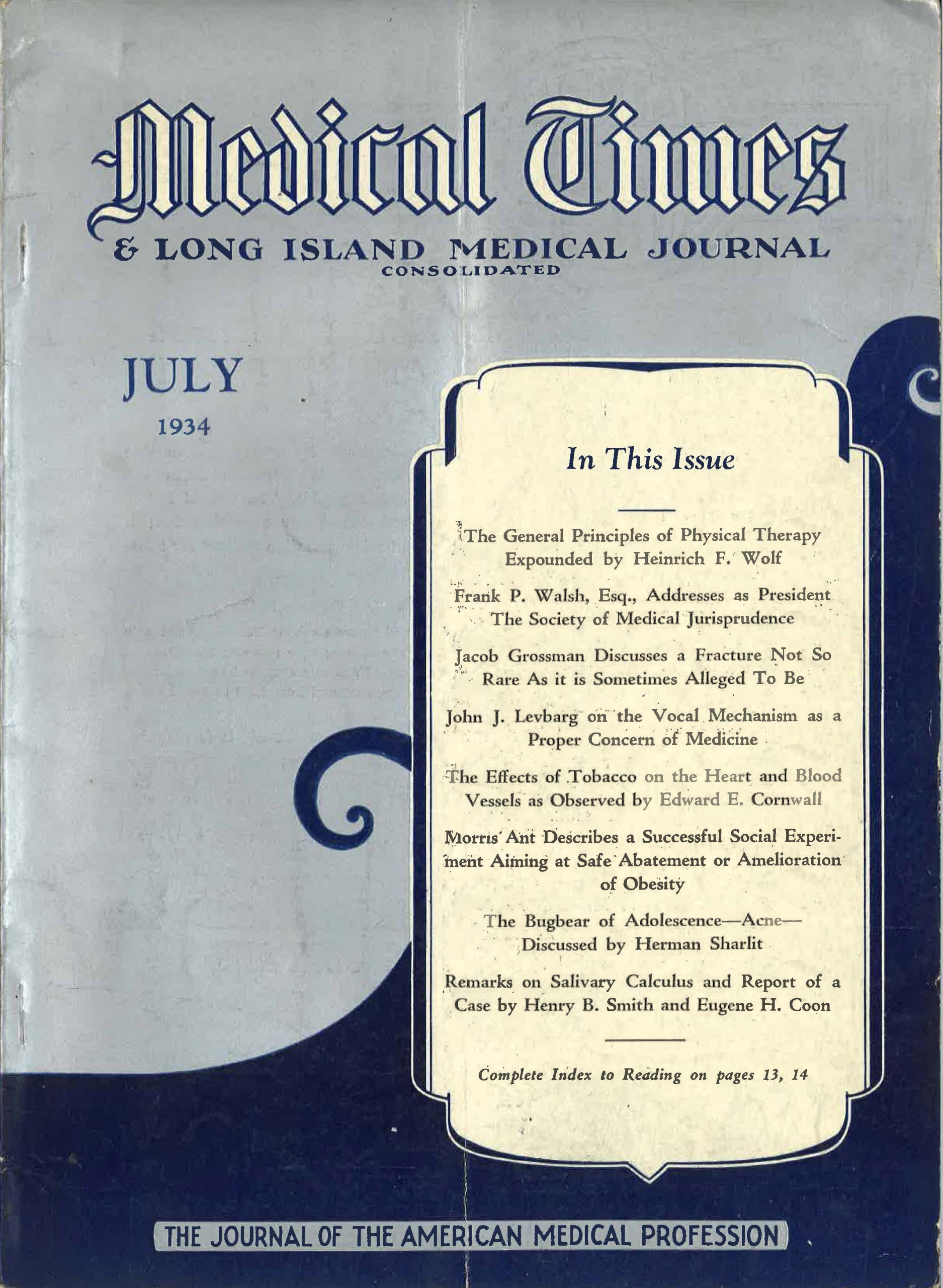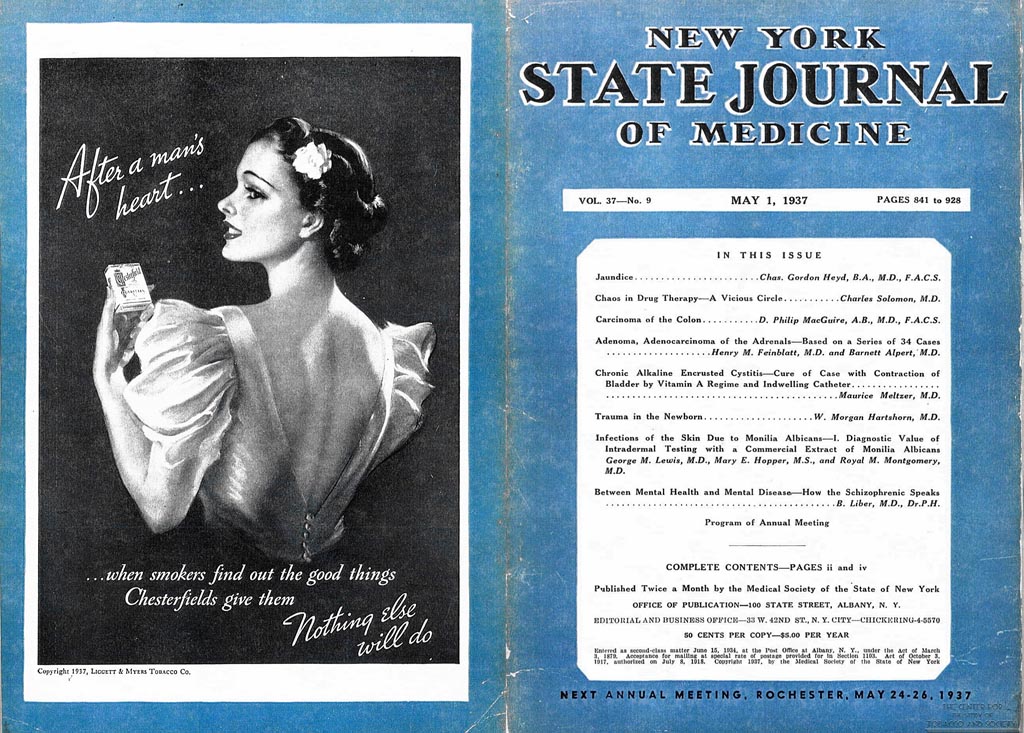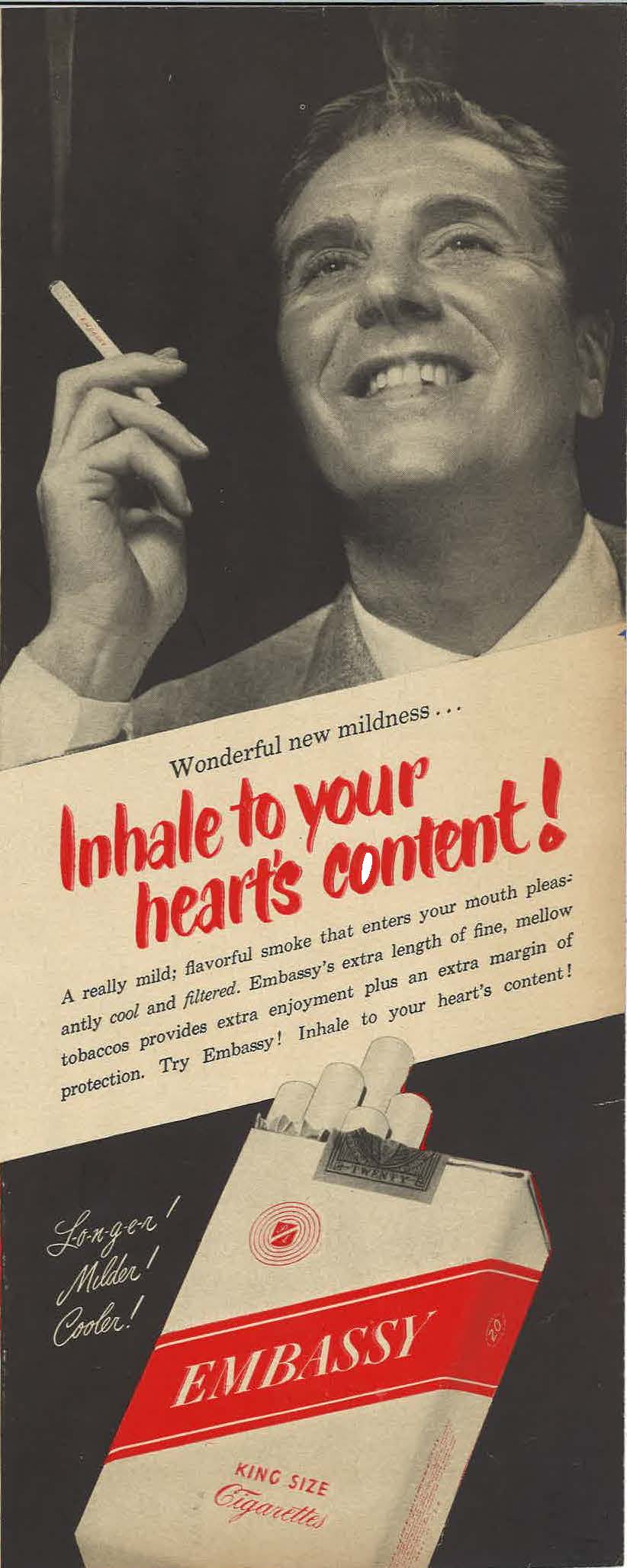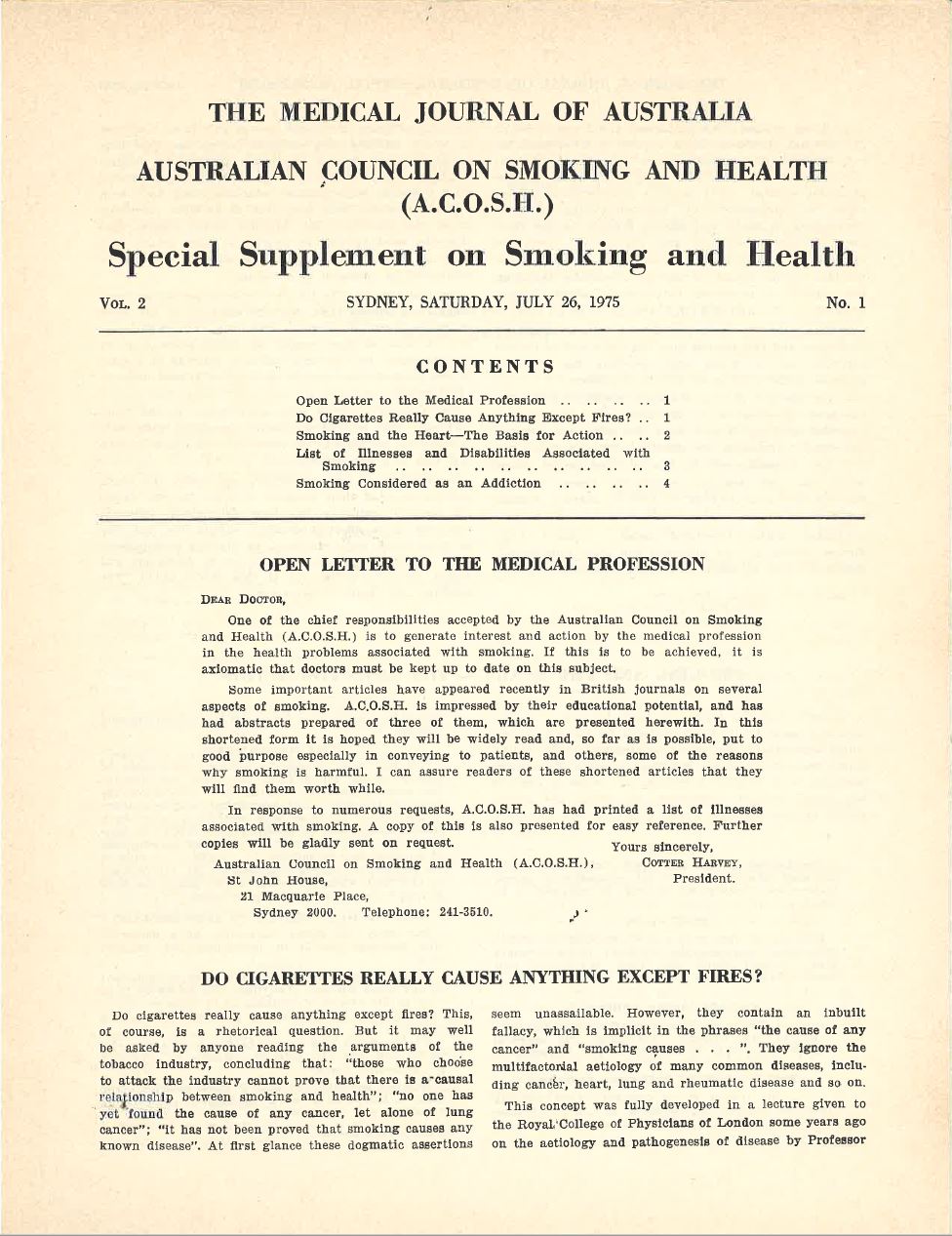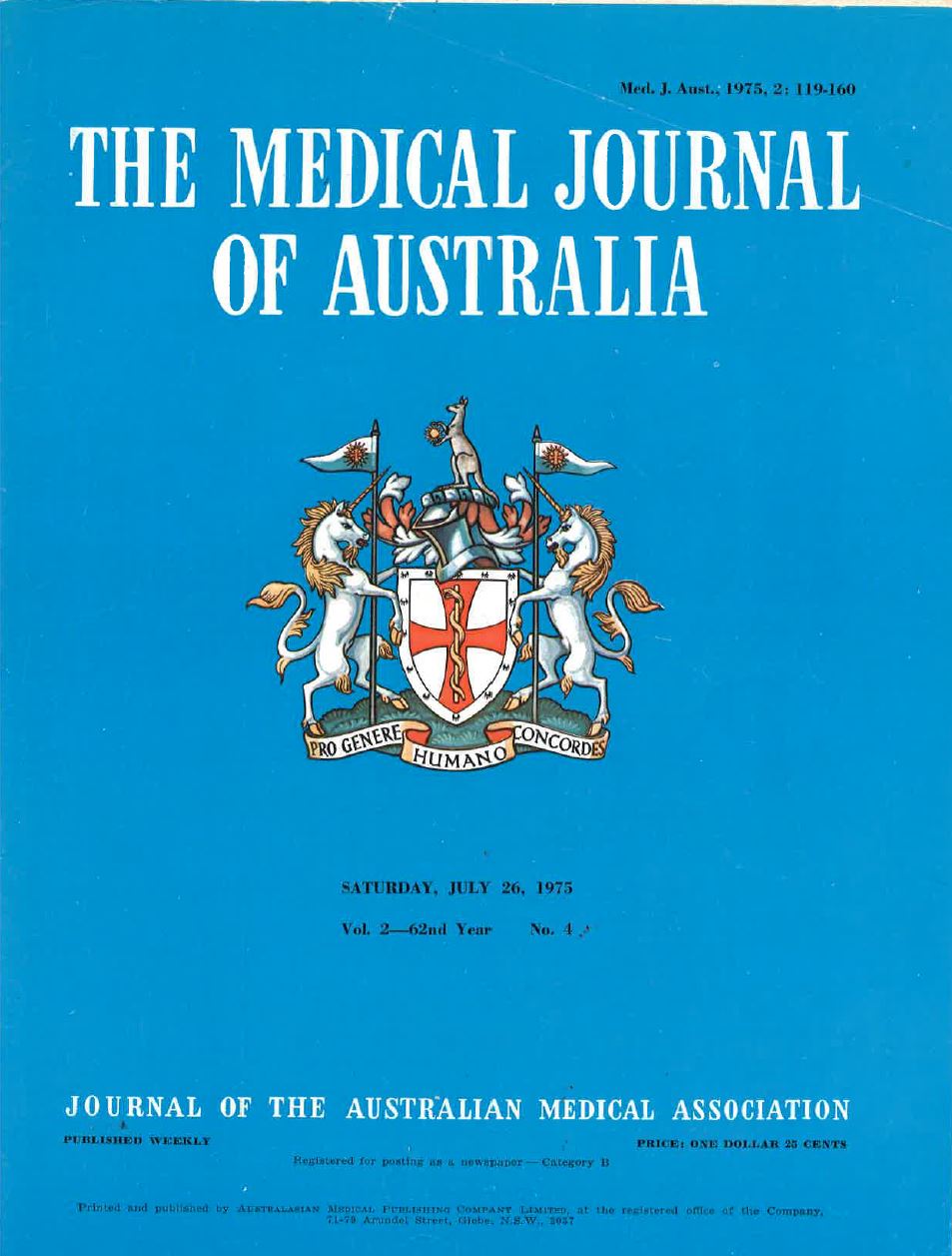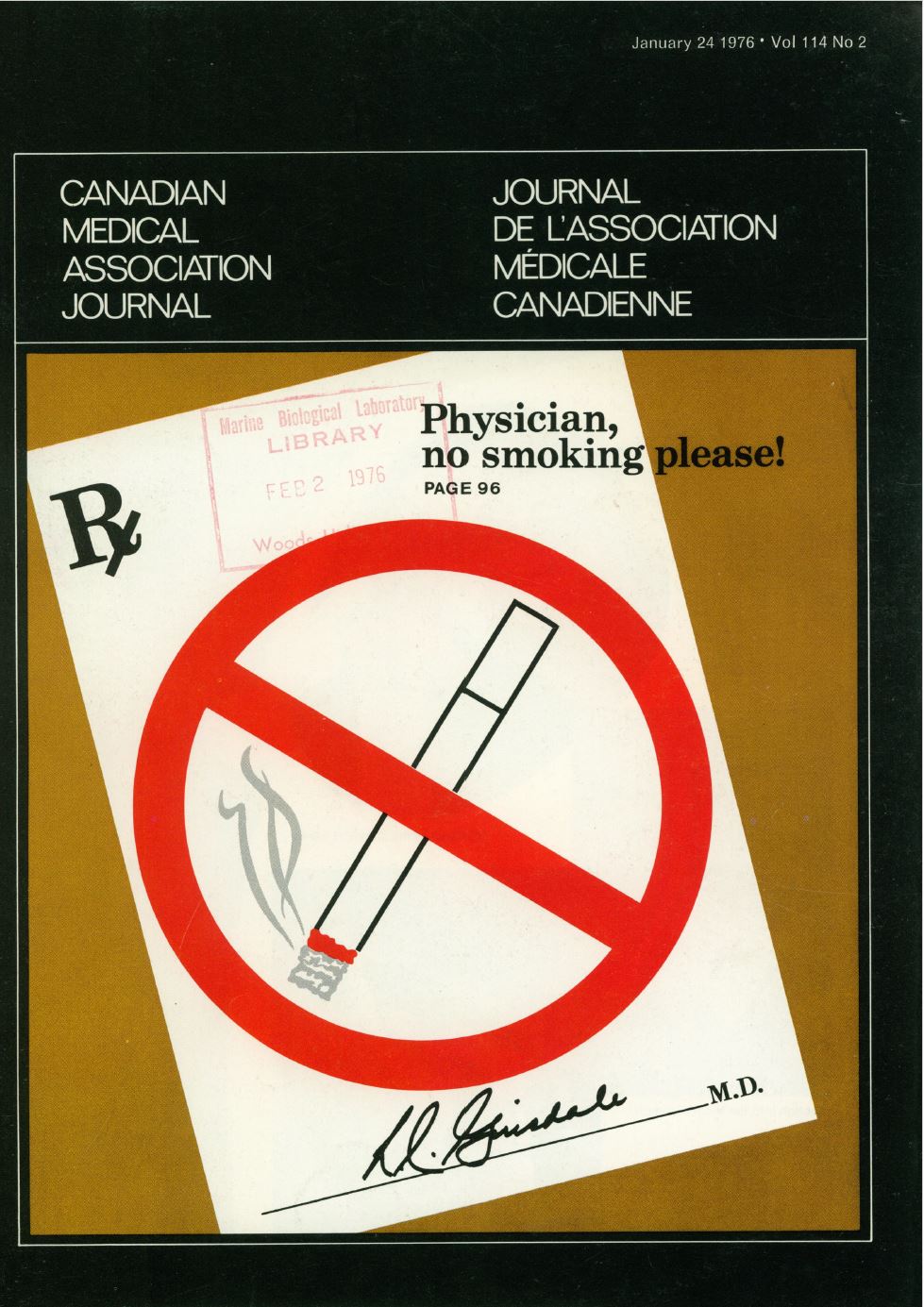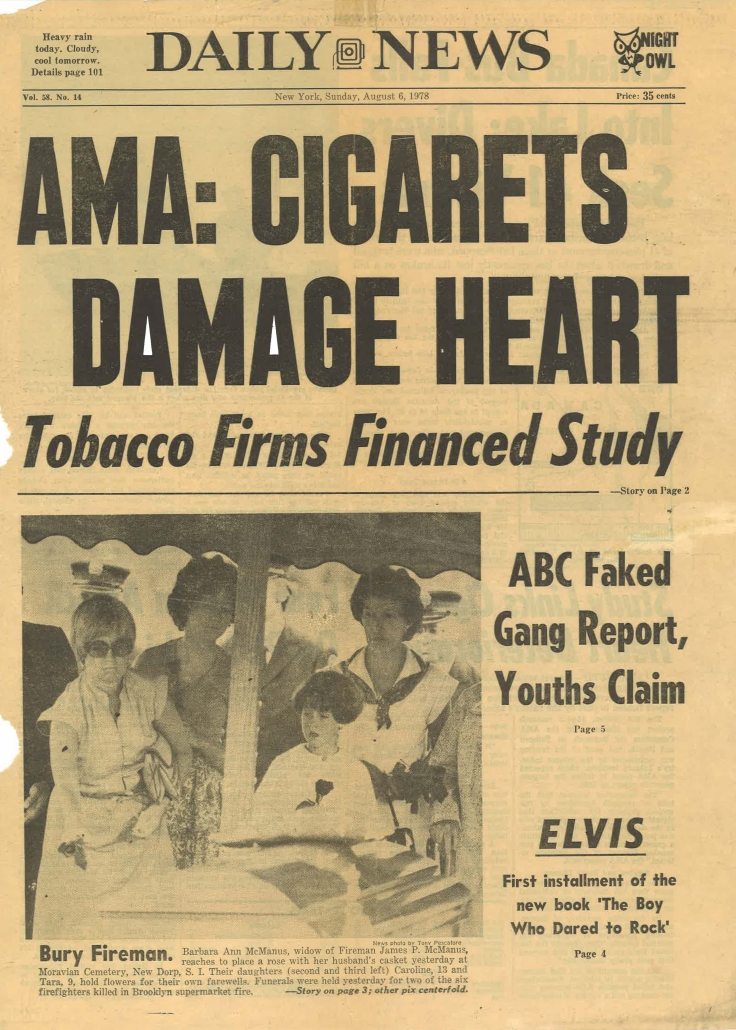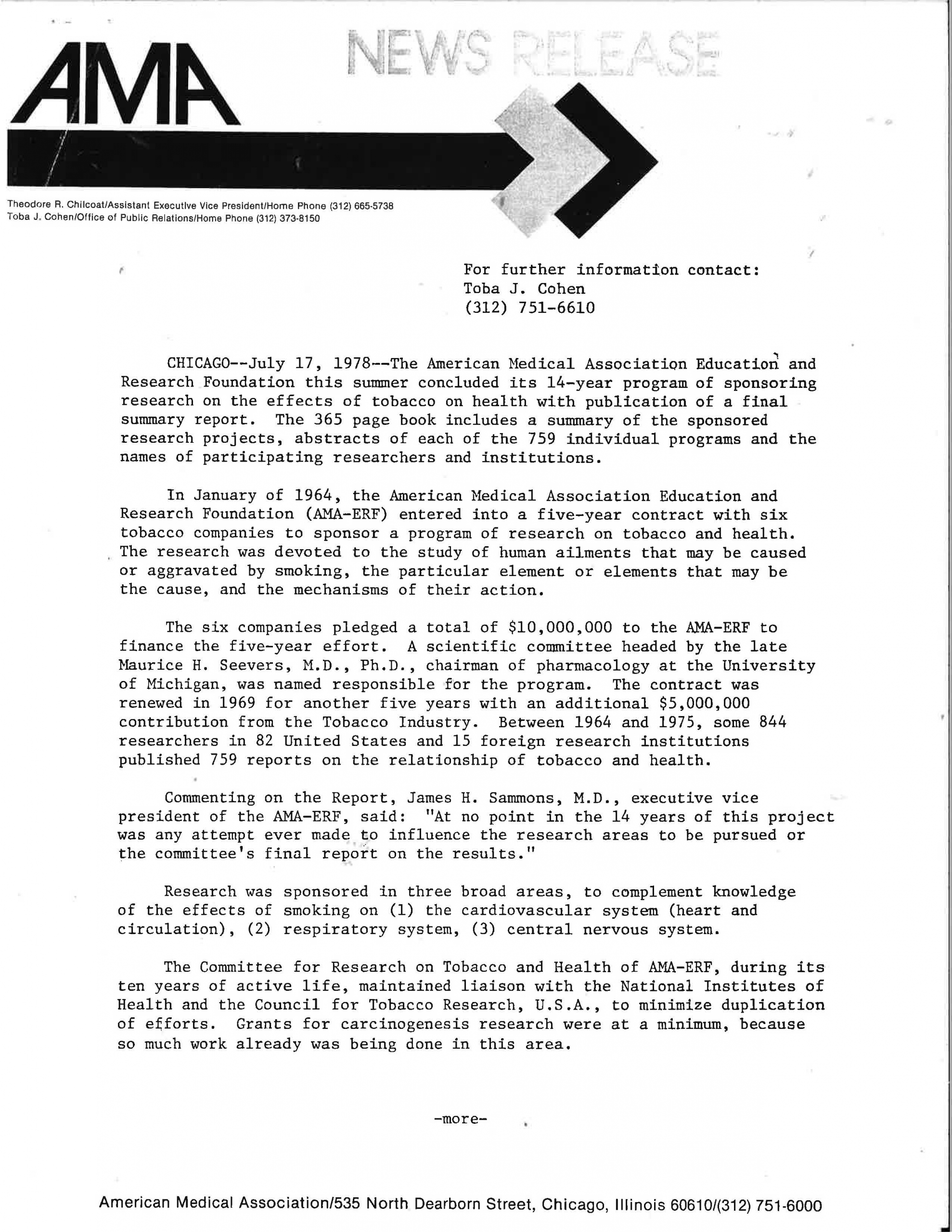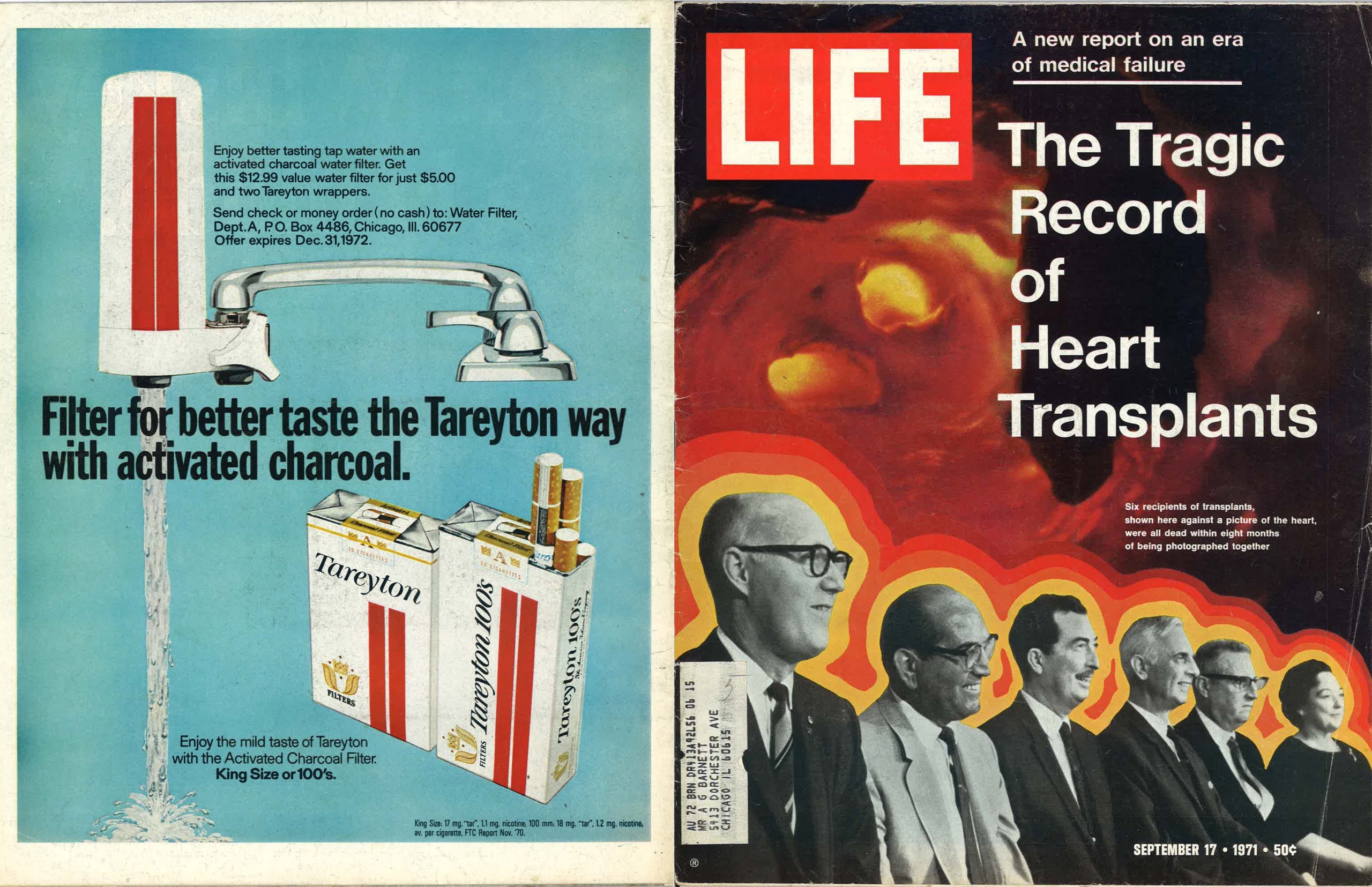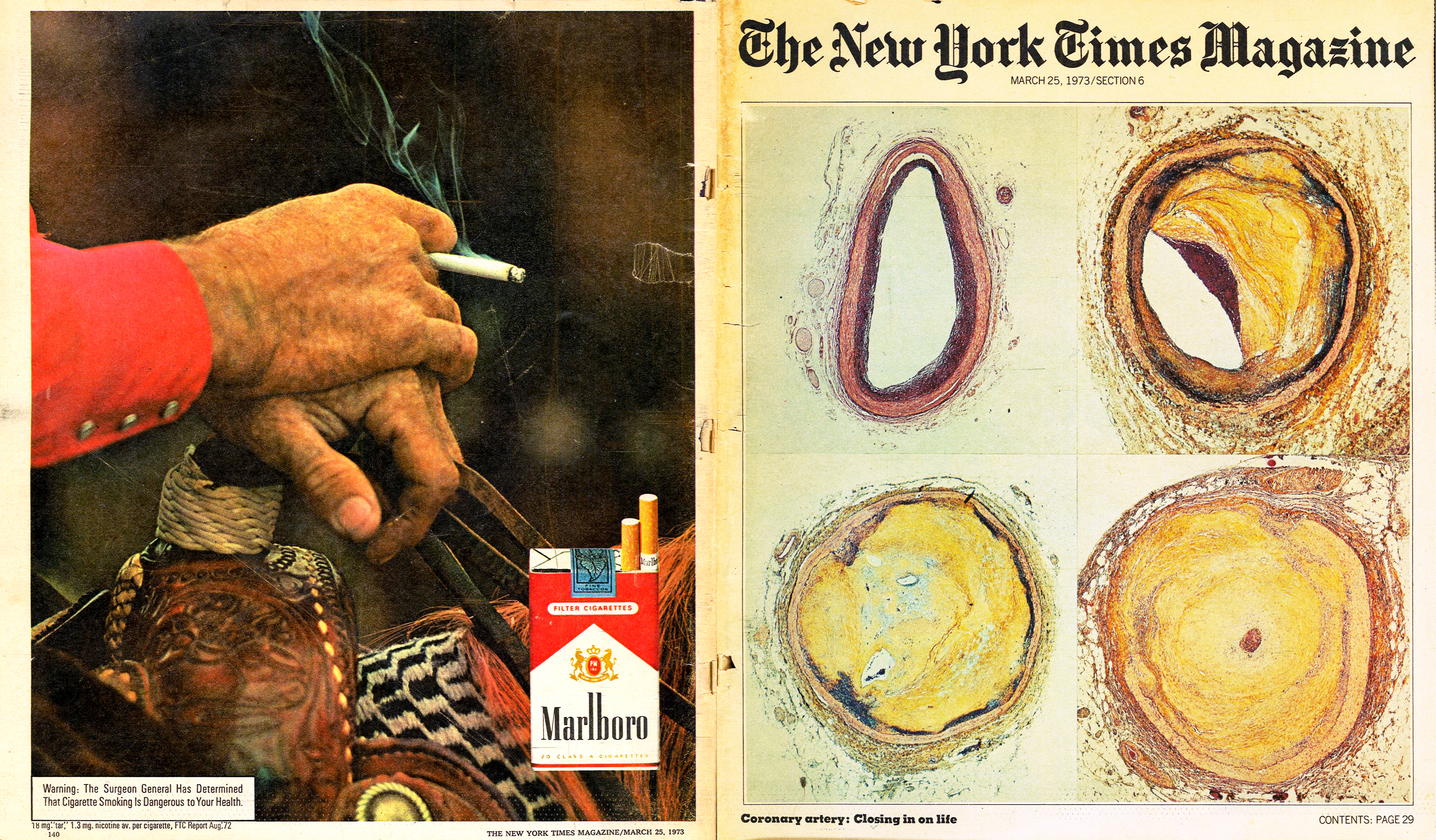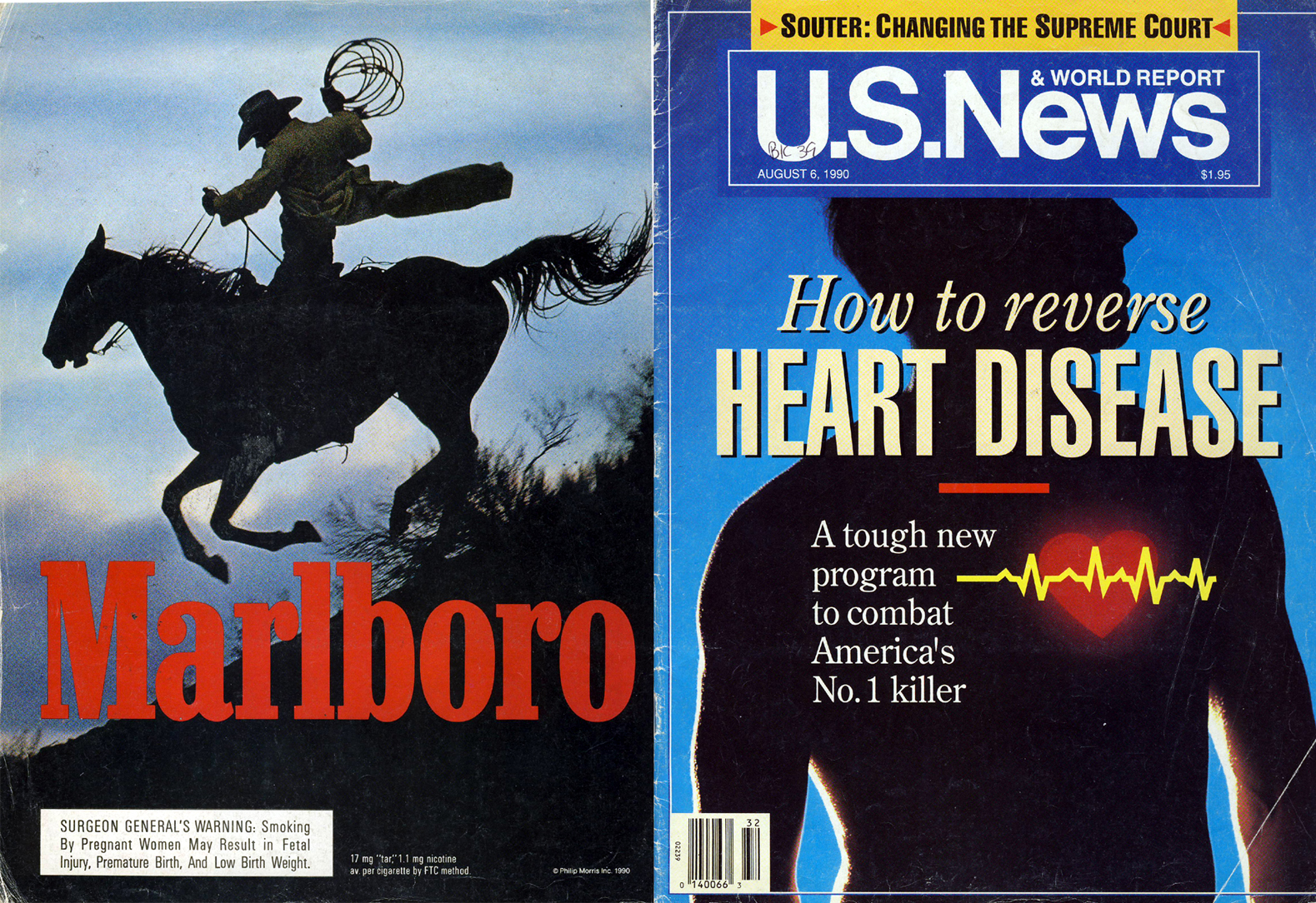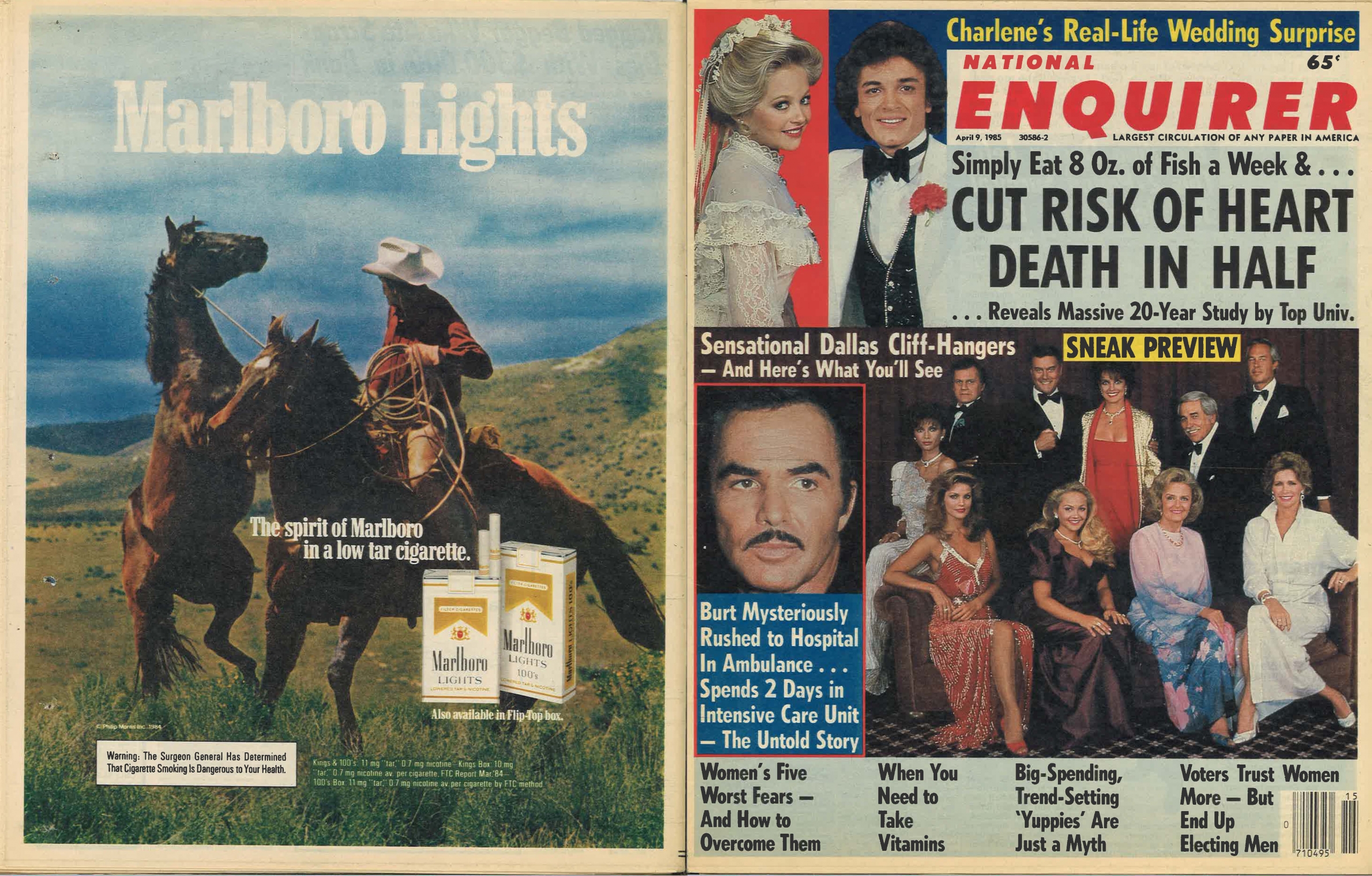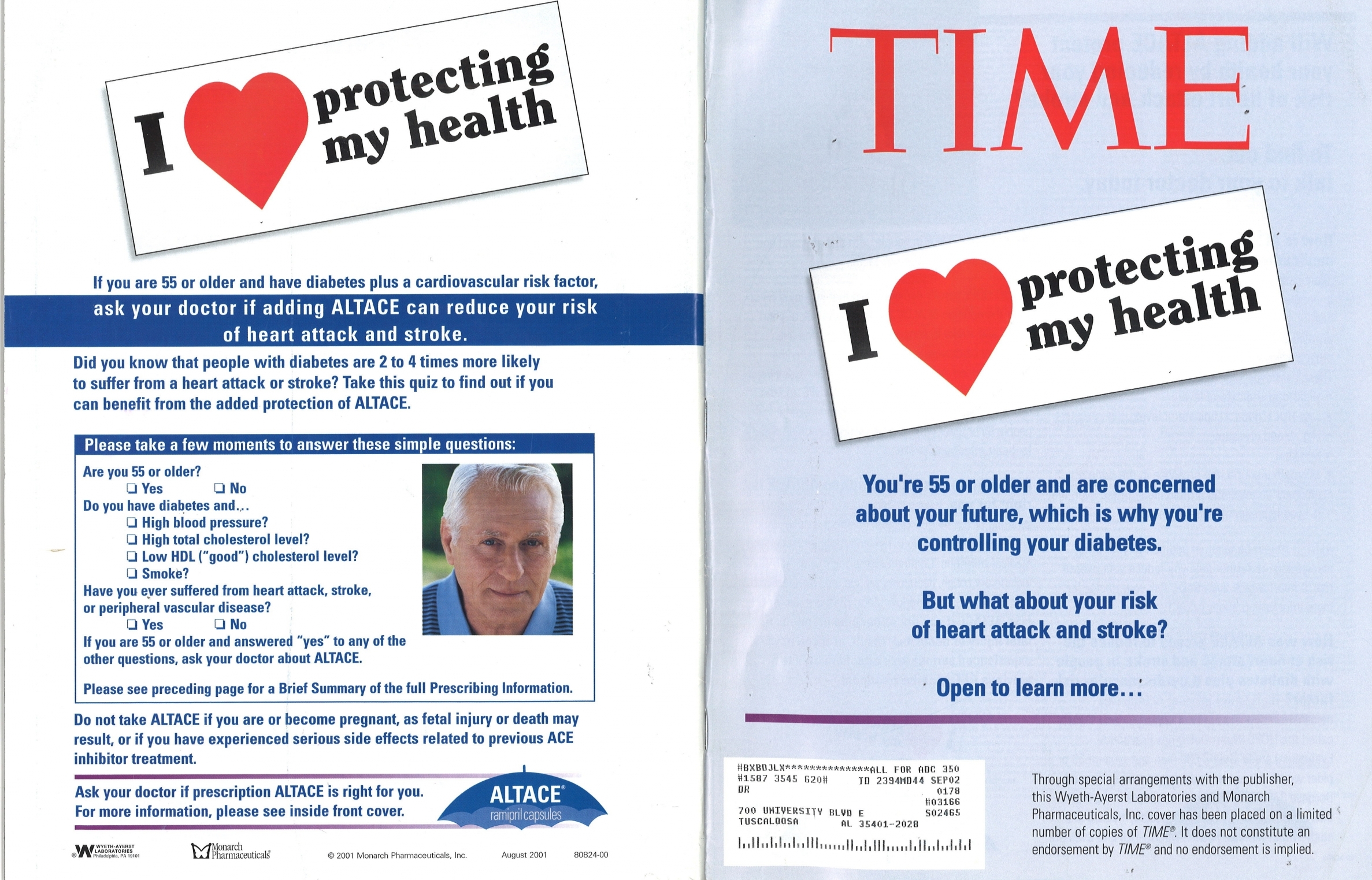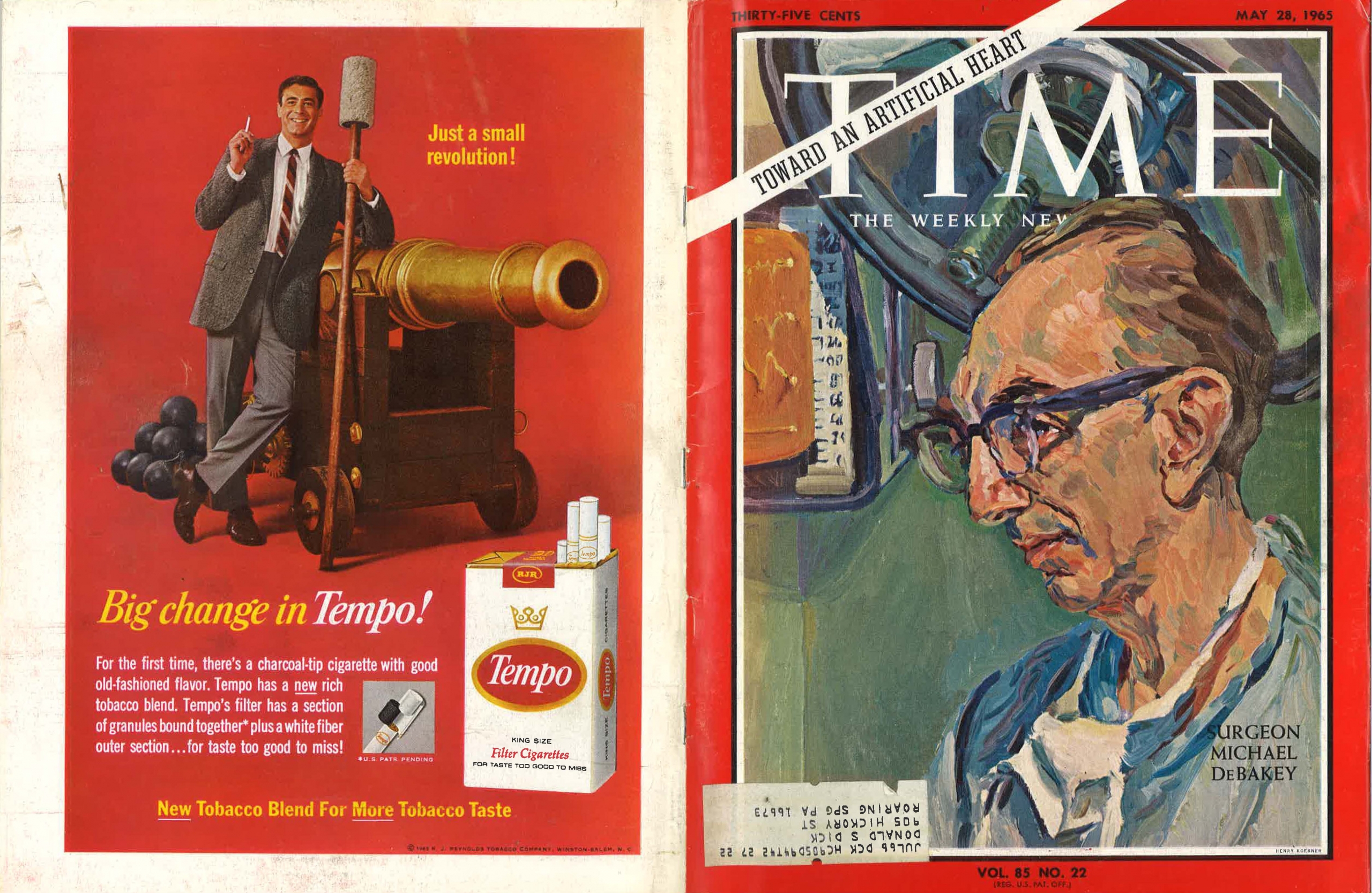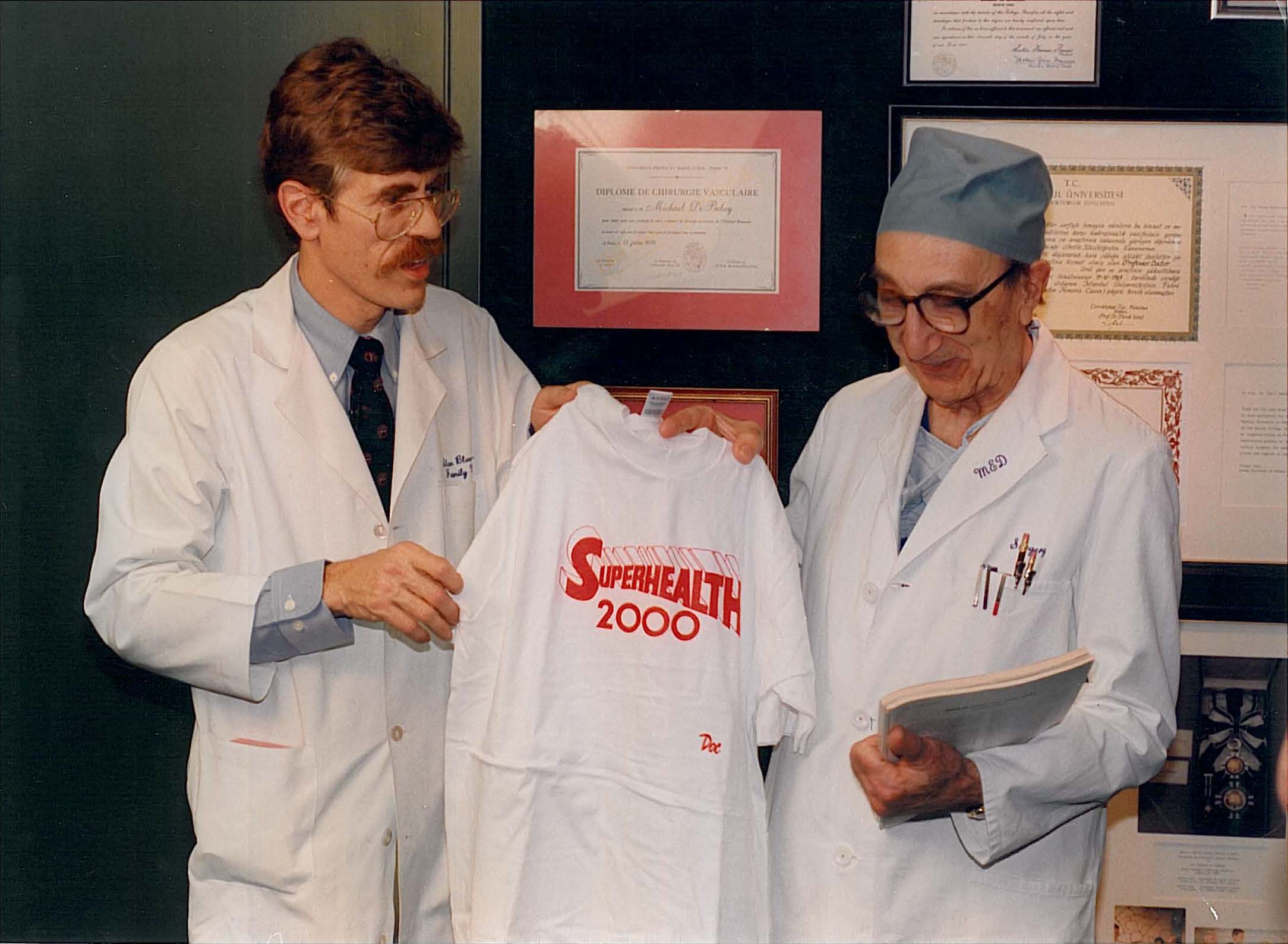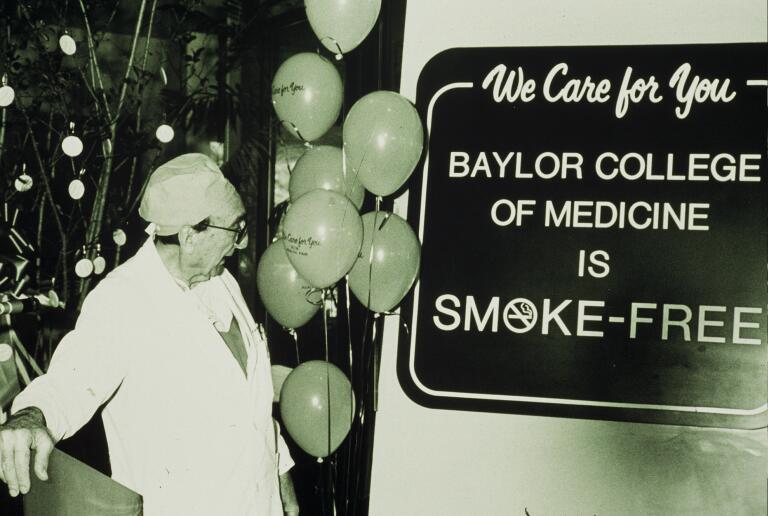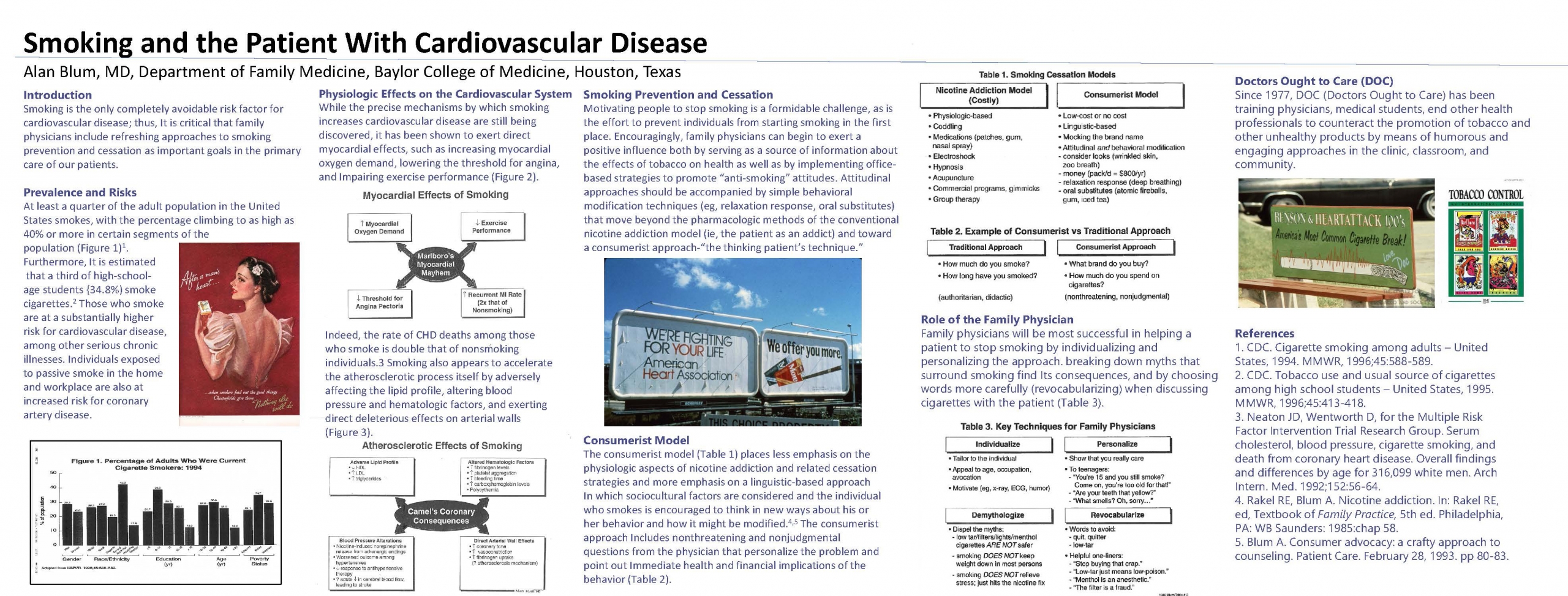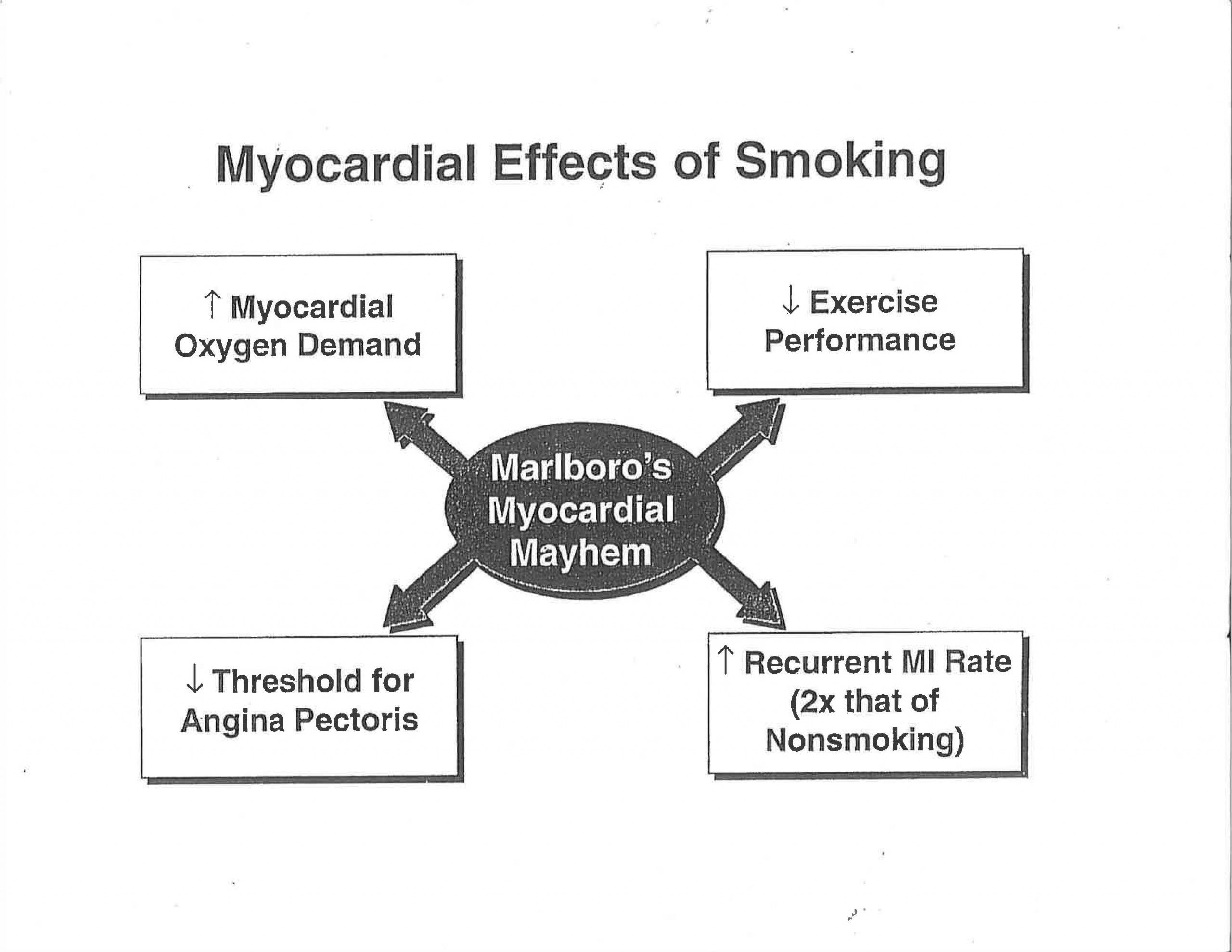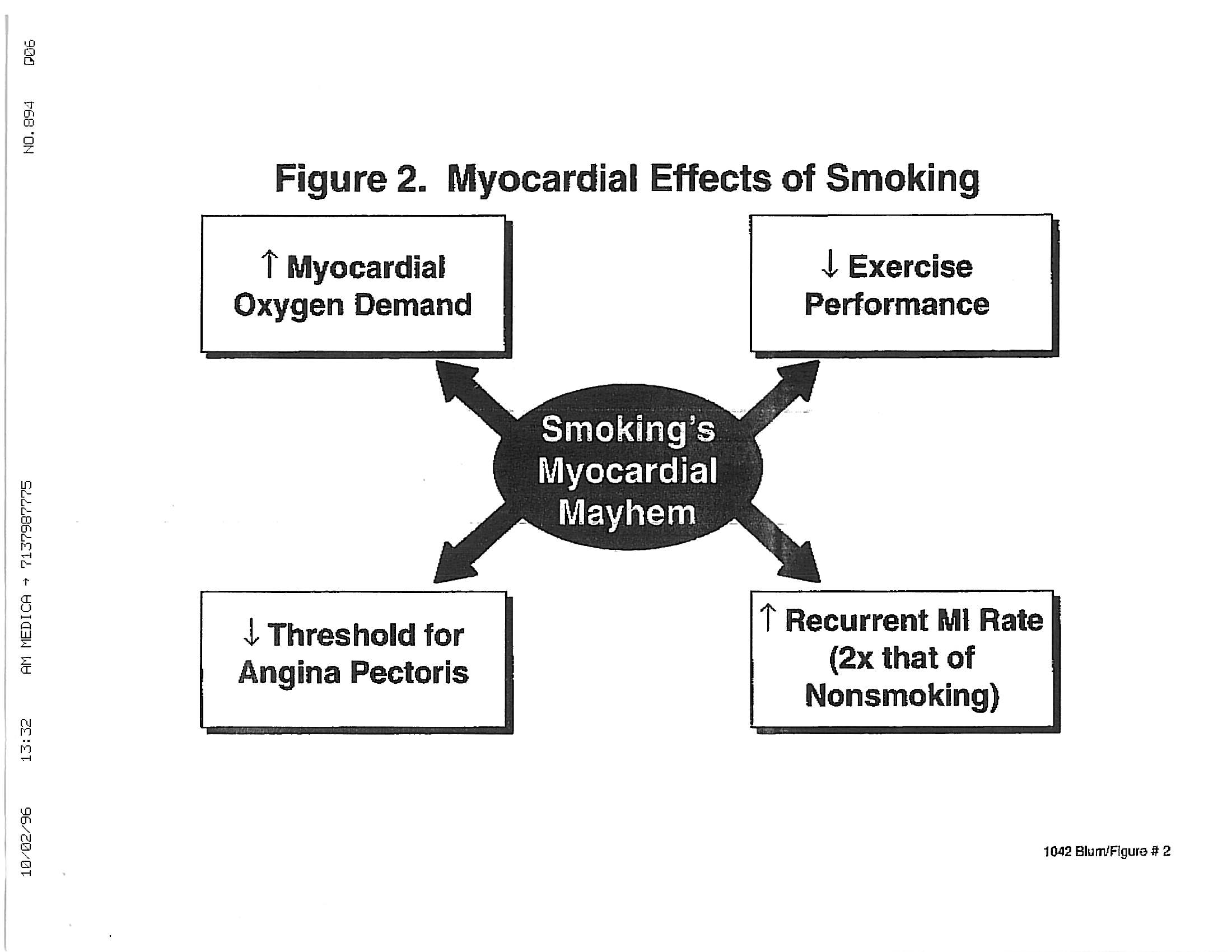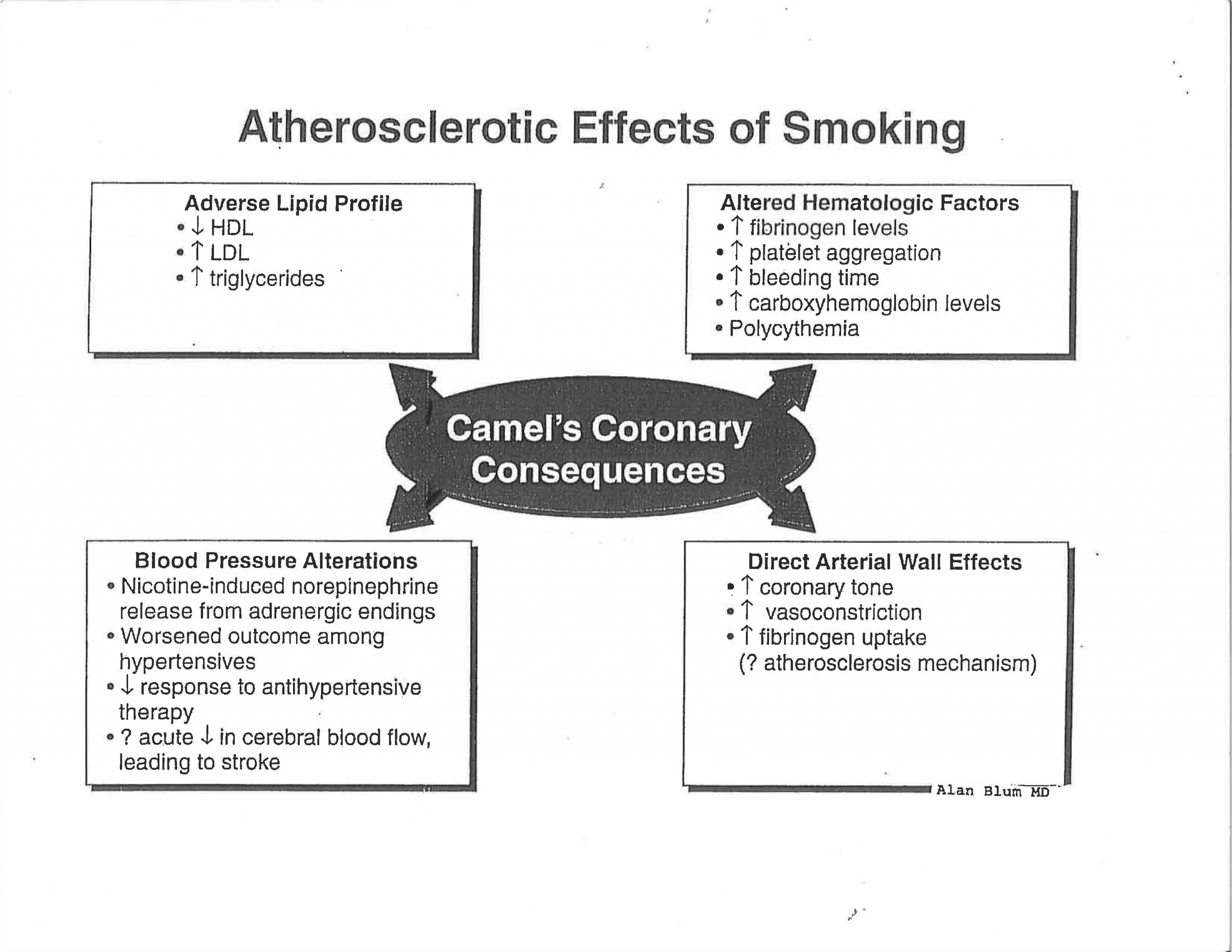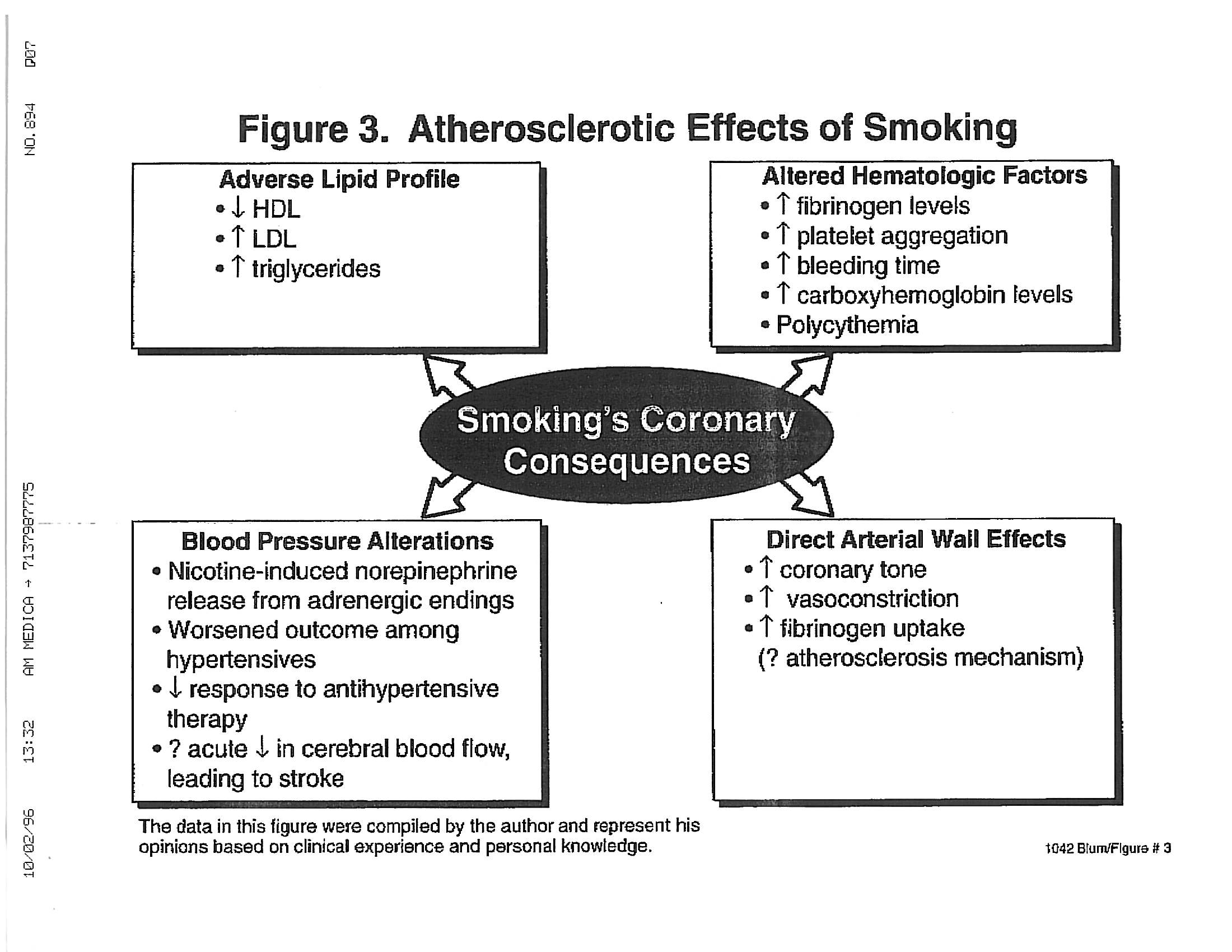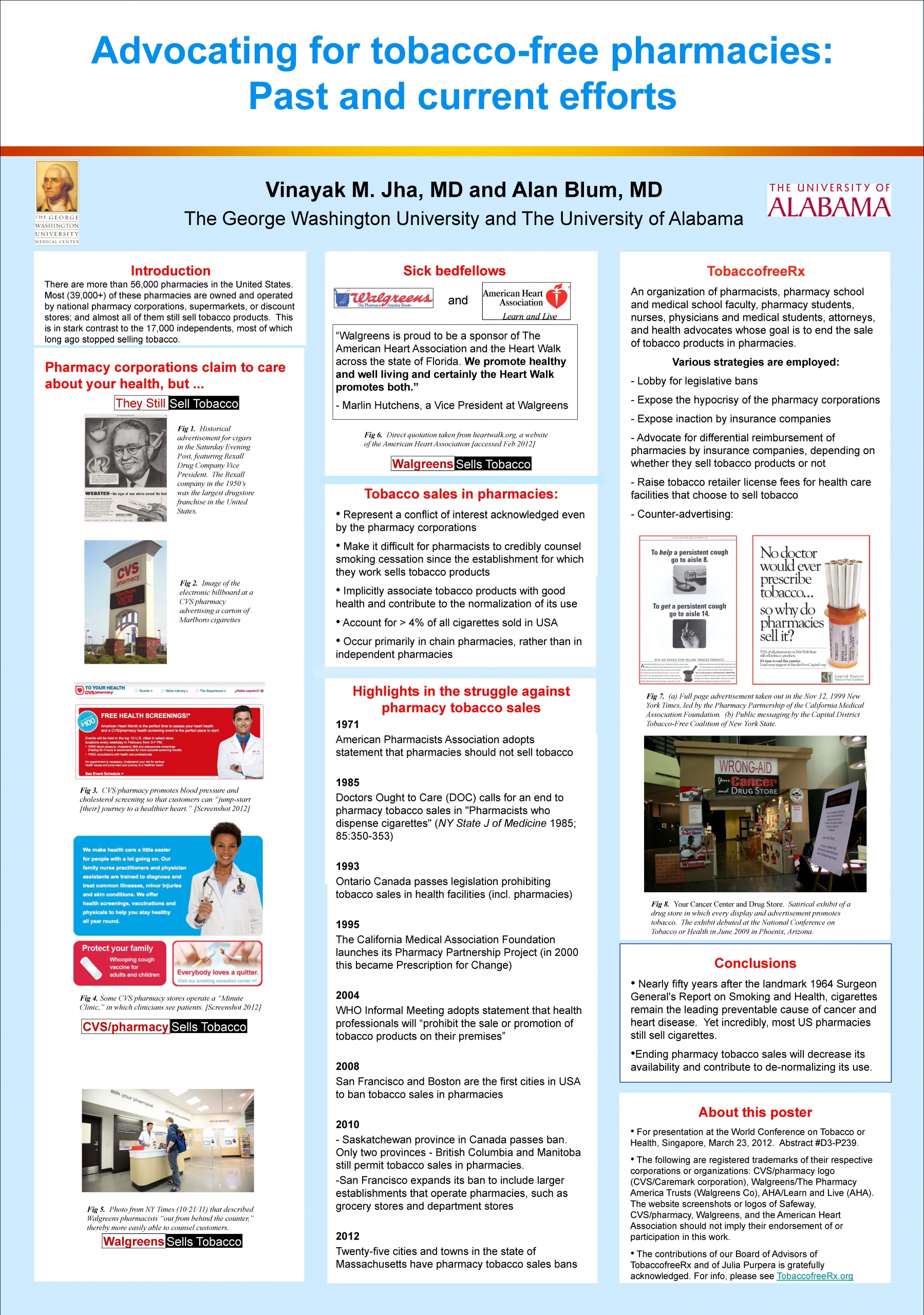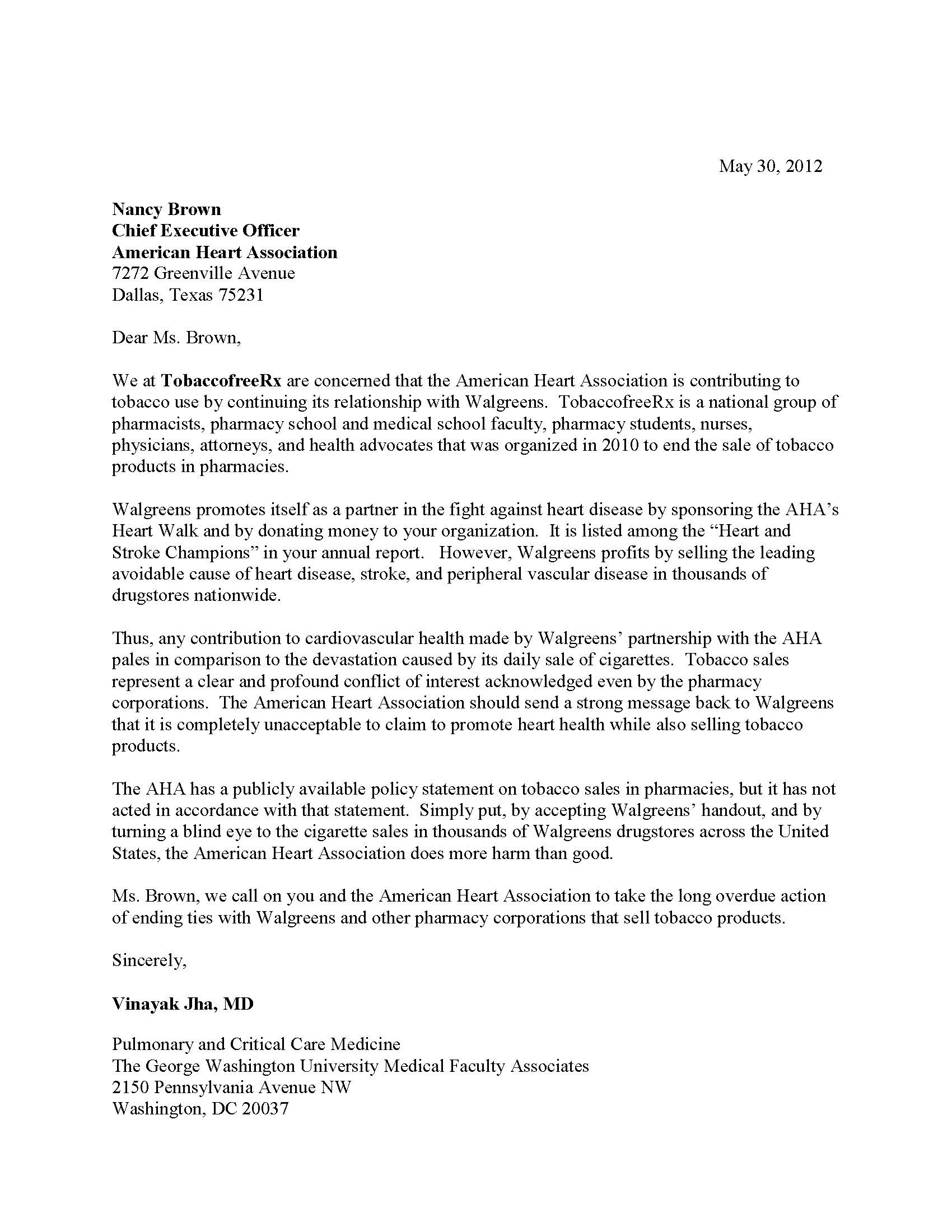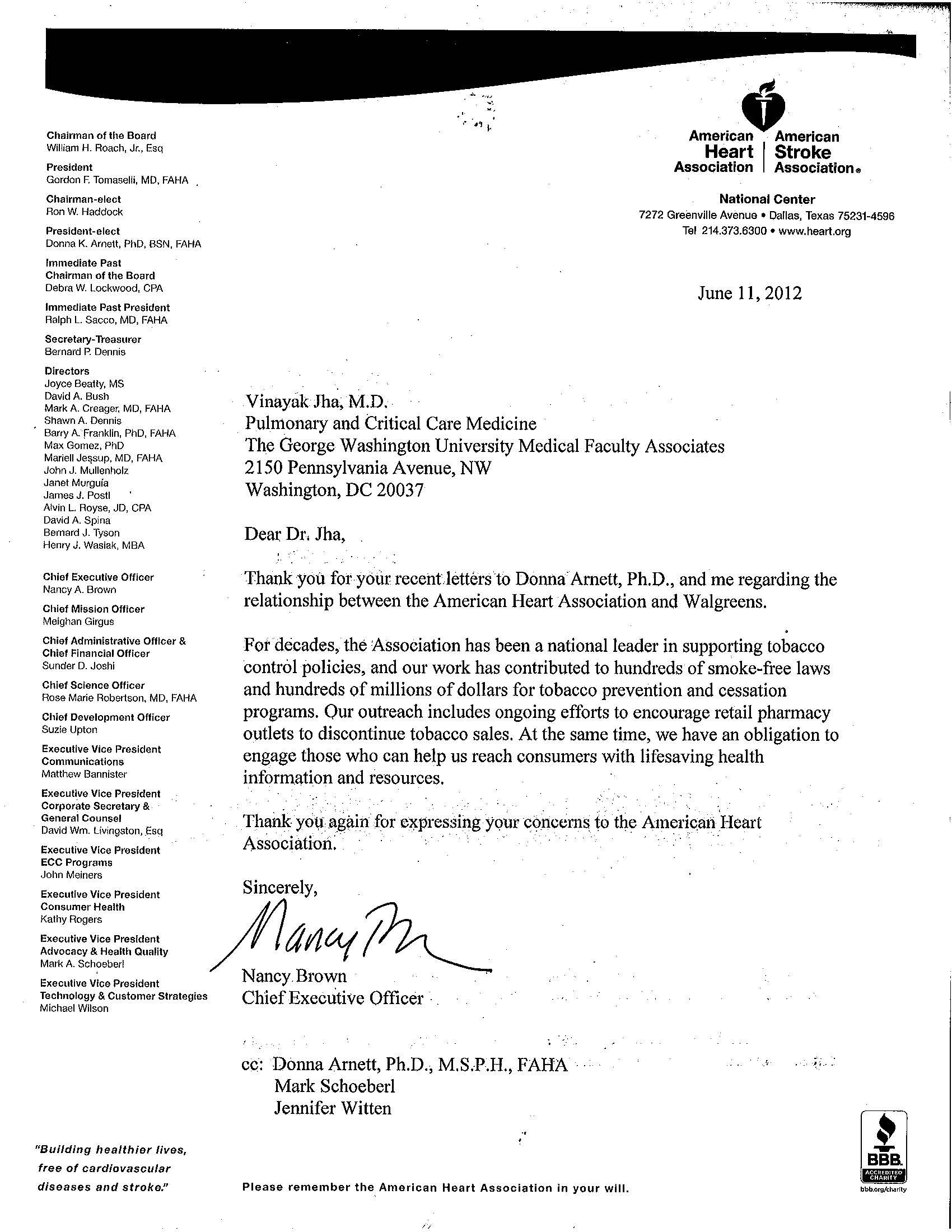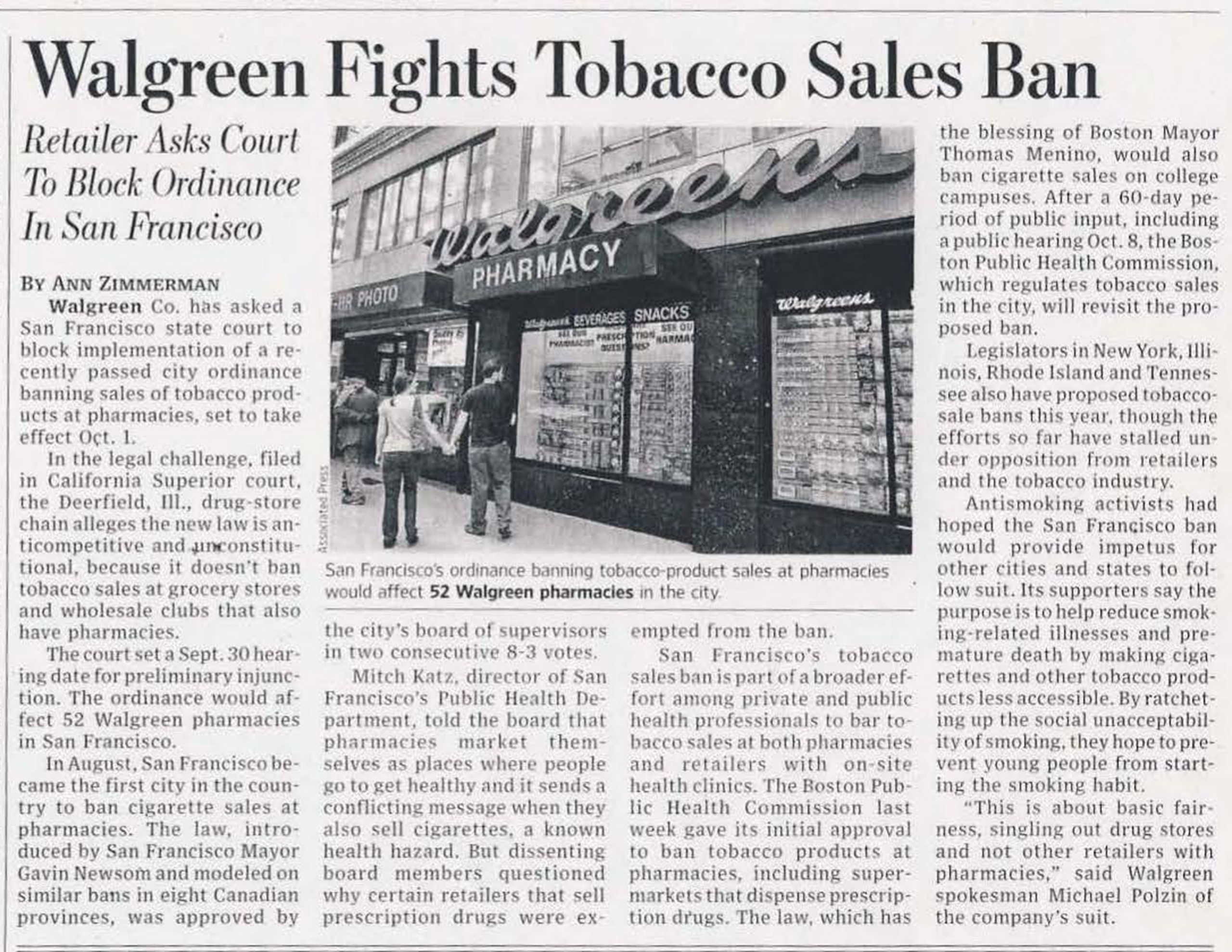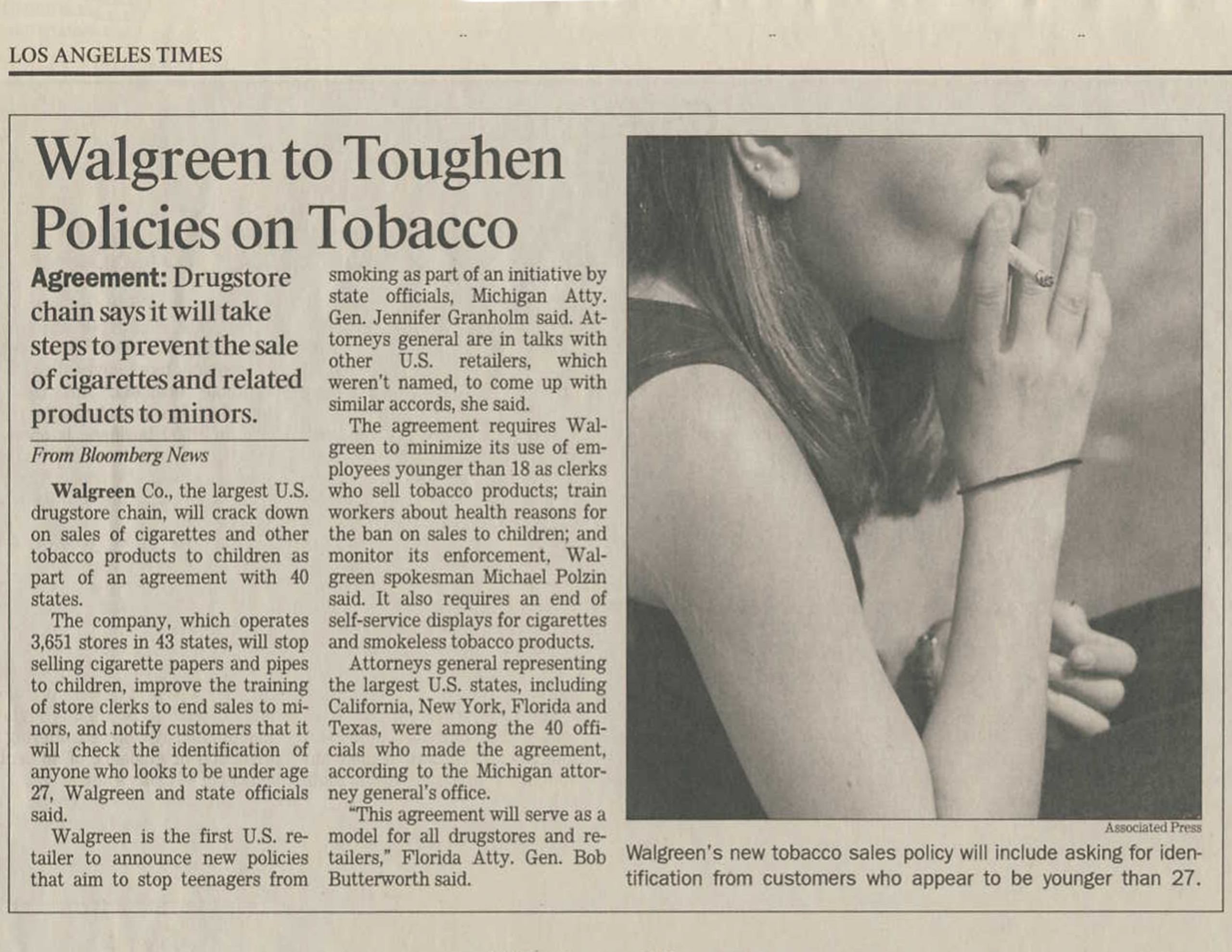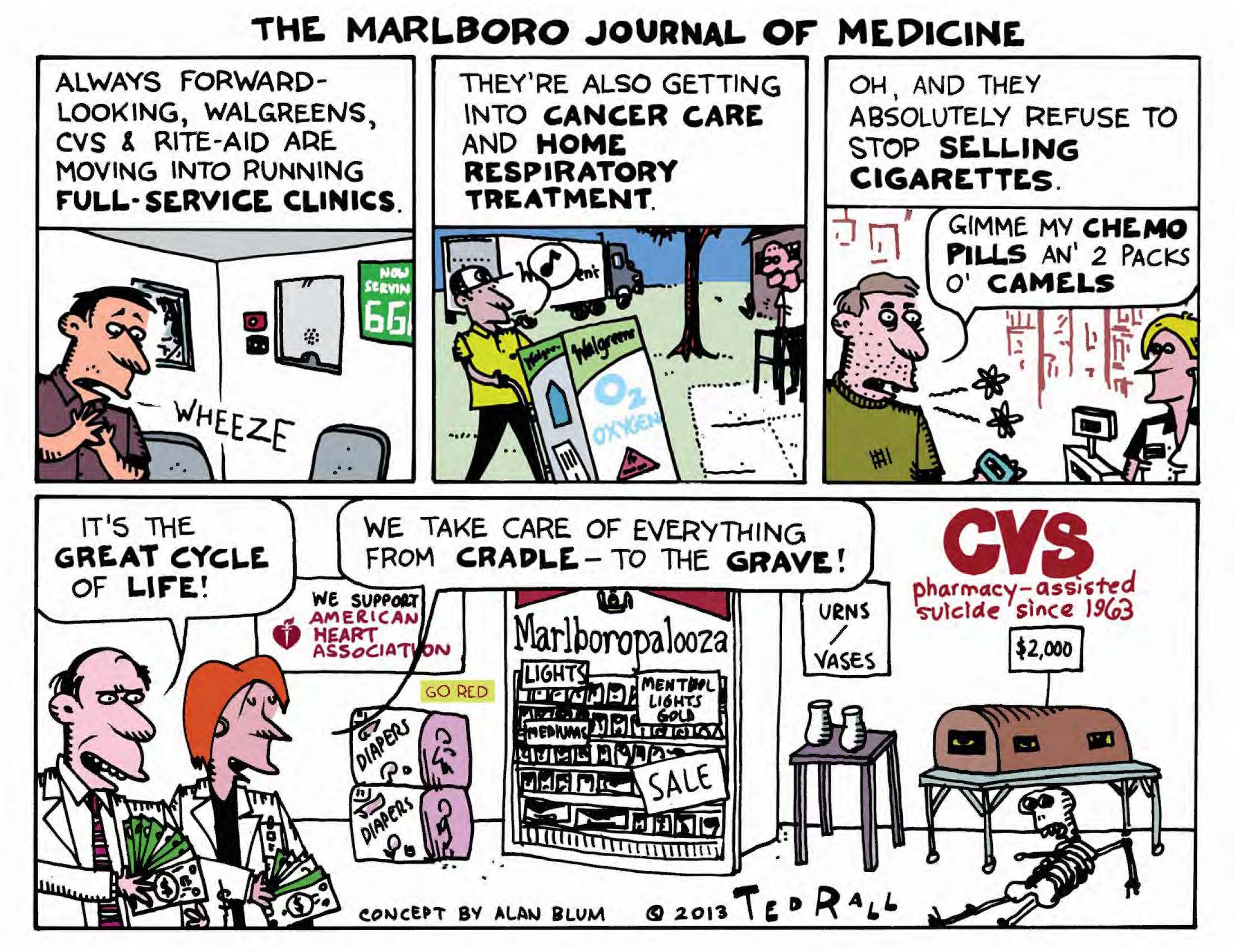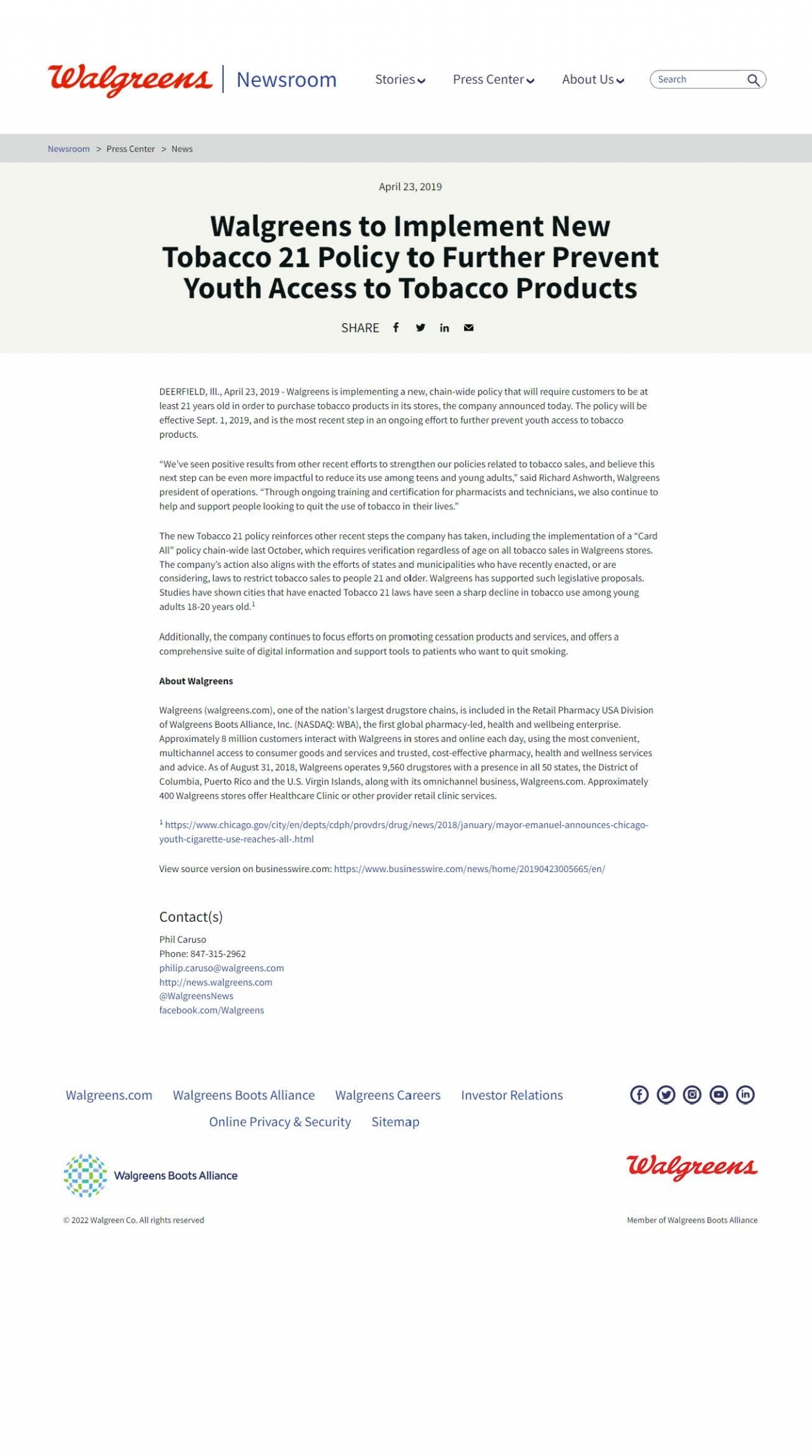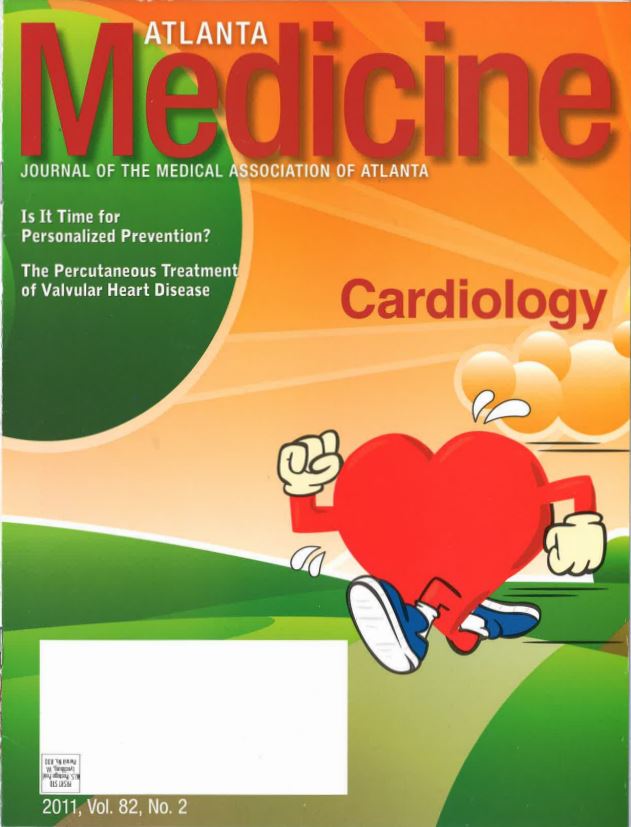“Tobacco Heart!”
Cigarette Smoking and Cardiovascular Health
INTRODUCTION
Although most adults and adolescents know that smoking can cause lung cancer, only a minority recognizes that smoking takes an even greater toll on the heart. Heart disease is the leading cause of death for both men and women and across most racial and ethnic groups. It takes the lives of over 650,000 Americans each year–or one in every four deaths. 30% of these heart disease deaths are attributed to cigarette smoking. This does not include the toll taken by smoking on other parts of our circulatory system that can result in strokes and ruptured aortic aneurysms. 20% of deaths from heart attacks due to blocked coronary arteries, the most common form of heart disease, are in individuals under 65. One in 12 Americans over 20 has coronary artery disease. 75% of heart attacks in women under 50 are attributed to cigarette smoking, which depletes the estrogen that helps lower blood pressure and cholesterol. The risk of a heart attack is proportional to the number of cigarettes smoked. The near-universal adoption by smokers of filtered cigarettes since their introduction by tobacco companies in the 1950s (to allay consumer anxiety about getting lung cancer) has not reduced the risk for cancer or heart disease. Since the addiction is to nicotine, people who smoke filtered cigarettes inhale more frequently and more deeply, thus exposing the heart and lungs to a greater amount of carbon monoxide, formaldehyde, ammonia, and other poison gases.
The good news is that the benefits from stopping smoking can be demonstrated at all ages. The risk of sudden cardiac death drops immediately upon stopping smoking and the risk of a heart attack goes down within a few years of stopping to a level similar to that of a person who has never smoked.
As with lung cancer and emphysema, the dramatic rise in heart disease in the US paralleled the rise in cigarette smoking. Yet despite the early published evidence of the link between smoking and heart disease in the 1920s and 1930s, and the alarms raised by heart doctors and cardiovascular surgeons like Alton Ochnser, Michael DeBakey, Dwight Harkin, and Richard Overholt in the 1940s, the American Medical Association (AMA) and other health groups were reluctant to urge the public to give up their cigarettes. It didn’t help that well into the 1950s two-thirds of physicians still smoked. This exhibition looks at what organized medicine, medical schools, the mass media, voluntary health organizations, pharmaceutical companies, chain drugstores, and the federal government have done—and have not done—to reduce the devastating cardiovascular consequences of tobacco use.
Alan Blum, MD
Director, The University of Alabama Center for the Study of Tobacco and Society
Reference:
Centers for Disease Control and Prevention: Heart Disease Facts 2022.


